- Teach Early Years
- Teach Primary
- Teach Secondary
- Technology & Innovation
- Advertise With Us
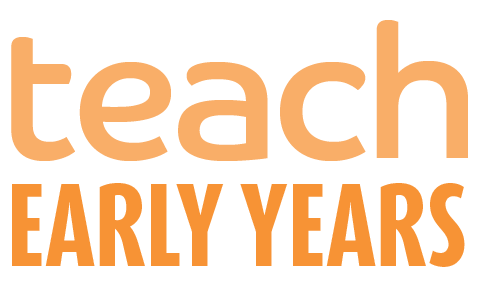
- Free Reports
- Have You Seen
- Learning & Development
- A Unique Child
- Enabling Environments
- Positive Relationships
- Nursery Management
Home > Learning & Development
Learning and Development

Maths problem-solving – Activities for Early Years settings
- Written By: Judith Dancer
- Subject: Maths
Share this:
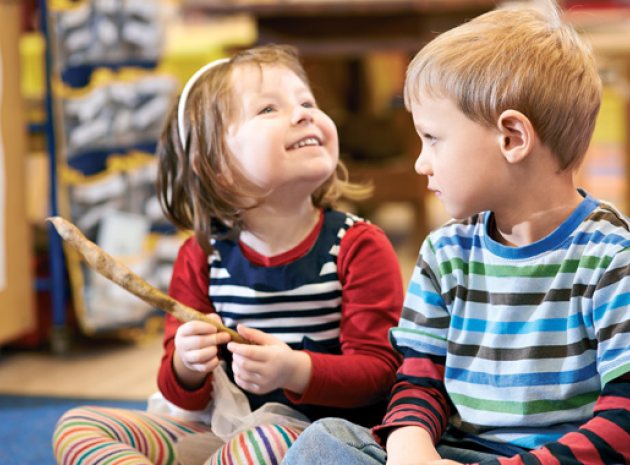
Critical thinking doesn’t have to be a daunting prospect. There are simple, effective and exciting ways to encourage children’s maths problem-solving skills, says Judith Dancer…
Maths is a subject many adults lack confidence in. Having struggled with it at school they often avoid it, wherever possible, when grown up.
But if maths seems scary for some people, then maths problem-solving can cause even more anxiety. There is no ‘safety net’ of knowing the ‘correct answer’ beforehand. This is because maths problem-solving lends itself to investigation and exploration with lots of possible tangents.
Understandably this is often the area of maths where many practitioners feel least confident. However, young children, who are not restrained by right answers, feel the most enthused and animated.
The non-statutory Development Matters Guidance , as part of ‘creating and thinking critically’ in the Characteristics of Effective Learning, identifies that practitioners need to observe how a child is learning, noting how a child is:
- thinking of ideas;
- finding ways to solve problems;
- finding new ways to do things;
- making links and noticing patterns in their experience;
- making predictions;
- testing their ideas;
- developing ideas of grouping, sequences, cause and effect;
- planning, making decisions about how to approach a task, solve a problem and reach a goal;
- checking how well their activities are going;
- changing strategy as needed;
- reviewing how well the approach worked.
All of these elements are, at one time or another, part of the problem-identifying and solving process – although not at the same time and in the same problem.
Role of the adult
Maths problem-solving for young children involves them understanding and using two kinds of maths:
- Maths knowledge – learning and applying an aspect of maths such as counting, calculating or measuring.
- Maths thinking skills – reasoning, predicting, talking the problem through, making connections, generalising, identifying patterns and finding solutions.
The best maths problems for children are the ones that they identify themselves. They will be enthused, fascinated and more engaged in these ‘real’, meaningful problems.
Children need opportunities to problem-solve together. As they play, they will often find their own mathematical problems.
One of the key roles of practitioners is to provide time, space and support for children. We need to develop situations and provide opportunities in which children can refine their maths problem-solving skills and apply their mathematical knowledge.
Supporting maths problem-solving
You can effectively support children’s developing maths problem-solving strategies through:
- Modelling maths talk and discussion – language is part of maths learning because talking problems through is vital. Children need to hear specific mathematical vocabulary in context. You can promote discussion through the use of comments, enabling statements and open-ended questions.
- Providing hands-on maths problem-solving activities across all areas of the setting. Children learn maths through all their experiences and need frequent opportunities to take part in creative and engaging experiences. Maths doesn’t just happen in the maths learning zone!
- Identifying potential maths learning indoors and outdoors. Provide rich and diverse open-ended resources that children can use in a number of different ways to support their own learning. It is important to include natural and everyday objects and items that have captured children’s imaginations, including popular culture.
Maths problem-solving possibilities
Spell it out.
This experience gives children lots of opportunities to explore calculating, mark making, categorising and decisions about how to approach a task.
What you need to provide:
- Assorted containers filled with natural materials. This includes leaves, pebbles, gravel, conkers, twigs, shells, fir cones, mud and sand. Include some ‘treasure’ – sequins, gold nuggets, jewels and glitter.
- Bottles and jugs of water, large mixing bowls, cups, a ‘cauldron’, small bottles, spoons and ladles.
- Cloaks and wizard hats.
- Laminated ‘spells’ – e.g. “To make a disappearing spell, mix 2 smooth pebbles, 2 gold nuggets, 4 fir cones, a pinch of sparkle dust, 3 cups of water”.
- Writing frameworks for children’s own spell recipes and a shiny ‘Spell Book’ to stick these in.
- Temporary mark-making opportunities such as chalk on slate.
The important thing with open-ended maths problem-solving experiences like this is to observe, wait and listen. Then, if appropriate, join in as a co-player with children, following their play themes.
So if children are mixing potions, note how children sort or categorise the objects. What strategies do they use to solve problems? What happens if they want eight pebbles and they run out? Observe what they do next.
When supporting children’s maths problem-solving, you need to develop a wide range of strategies and ‘dip into’ these appropriately. Rather than asking questions, it is often more effective to make comments about what you can see. For example, say, “Wow, it looks as though there is too much potion for that bottle”.
Acting as a co-player offers lots of opportunities to model mathematical behaviours. This might include reading recipes for potions and spells out loud, focusing on the numbers – one feather, three shells…
Going, going, gone
We all know that children will engage more fully when involved in experiences that fascinate them. If a particular group has a real passion for cars and trucks , consider introducing maths problem-solving opportunities that extend this interest.
This activity offers opportunities for classifying, sorting, counting, adding and subtracting, among many other things.
- Some unfamiliar trucks and cars and some old favourites. Ensure these include metal, plastic and wooden vehicles that can be sorted in different ways.
- Masking tape and scissors.
- Sticky labels and markers.
Mark out some parking lots on a smooth floor, or huge piece of paper using masking tape. Lining paper is great for this. Line the vehicles up around the edge of the floor area.
Encourage one child to select two vehicles that have something the same about them. Ask the child, “What is the same about them?”.
When the children have agreed on what is the same – e.g. size, materials, colour, lorries or racing cars – the child selects a ‘parking lot’ to put the vehicles in. So this first parking lot could be for ‘red vehicles’.
Another child chooses two more vehicles that have something the same. Do they belong in the same ‘parking lot’, or a different parking lot? E.g. these vehicles could both be racing cars.
What happens when a specific vehicle could belong in both lots? E.g. it could belong in the set of red vehicles and also belongs in the set of racing cars.
Support the children as they discuss the vehicle. Make new ‘parking lots’ with masking tape and create labels for the groups, if you choose.
Observe children’s strategies
It’s really important to observe the strategies the children use. Where appropriate, ask the children to explain what they are doing and why.
If necessary, introduce and model the use of the vocabulary ‘the same as’ and ‘different from’. Follow children’s discussions and interests. If they start talking about registration plates, consider making car number plates for all the wheeled toys outdoors.
Do the children know the format of registration plates? Can you take photos of cars you can see in the local environment?
Camping out
Constructing camps and dens outdoors is a good way to give children the opportunity to be involved in lots of maths problem-solving experiences and construction skills learning. This experience offers opportunities for using the language of position, shape and space, and finding solutions to practical problems.
- Materials to construct a tent or den such as sheets, curtains, poles, clips and string.
- Rucksacks, water bottles, compasses and maps.
- Oven shelf and bricks to build a campfire or barbecue.
- Buckets and bowls and water for washing up.
Encourage the children to explore the resources and decide which materials they need to build the camp. Suggest they source extra resources as they are needed.
Talk with the children about the best place to make a den or erect a tent and barbecue. During the discussion, model the use of positional words and phrases.
Follow children’s play themes. This could include going on a scavenger hunt collecting stones, twigs and leaves and going back to the campsite to sort them out.
Encourage children to try different solutions to the practical problems they identify. Use a running commentary on what is happening without providing the solution to the problem.
Look for opportunities to develop children’s mathematical reasoning skills by making comments such as, “I wonder why Rafit chose that box to go on the top of his den.”
If the children are familiar with traditional tales, you could extend this activity by laying a crumb trail round the outdoor area for children to follow. Make sure that there is something exciting at the end of the trail. It could be a large dinosaur sitting in a puddle, or a bear in a ‘cave’.
Children rarely have opportunities to investigate objects that are really heavy. Sometimes they have two objects and are asked the question, “Which one is heavy?” when both objects are actually light.
This experience gives children the chance to explore really heavy things and measures (weight). They also need to cooperate and find new ways to do things.
- A ‘building site’ in the outdoor area. Include hard hats, builders’ buckets, small buckets, shovels, spades, water, sand, pebbles, gravel, guttering, building blocks, huge cardboard boxes and fabric (this could be on a tarpaulin).
- Some distance away, builders’ buckets filled with damp sand and large gravel.
- Bucket balances and bathroom scales.
With an open-ended activity such as this, it is even more important to observe, wait and listen as the children explore the building site and the buckets full of sand and gravel.
Listen to the discussions the children have about moving the sand and the gravel to the building site. What language do they use?
Note the strategies they use when they can’t lift the large buckets. Who empties some of the sand into smaller buckets? Who works together collaboratively to move the full bucket? Does anyone introduce another strategy, for example, finding a wheelbarrow or pull-along truck?
Where and when appropriate, join in the children’s play as a co-player. You could act in role as a customer or new builder. Ask, “How can I get all this sand into my car?”. “How much sand and gravel do we need to make the cement for the foundations?”.
Extend children’s learning by modelling the language of weight:
- heavy/heavier than/heaviest
- light/lighter than/lightest
- about the same weight as/as heavy as
- balance/weigh
Judith Dancer is an author, consultant and trainer specialising in communication and language and mathematics. She is co-author, with Carole Skinner, of Foundations of Mathematics – An active approach to number, shape and measures in the Early Years .
You may also be interested in...
- Great ways to support communication, language and literacy
- How to provide outstanding learning in the outdoors
- Award winners announced
Subscribe to Our Newsletter
I agree to the Terms & Conditions and Privacy & Cookies Policy.
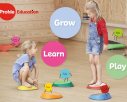
Enhance your children’s learning environment with unique products from Profile Education

A shared vision for early years – reflecting on practice at the hey! conference

Find out how one nursery uses Tapestry to support their child-centred practice

Say farewell to ‘Lost Property’ with My Nametags
View all Top Products
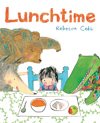
Silly Doggy!
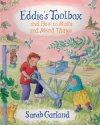
Eddie’s Toolbox and How to Make and Mend Things
Recommended for you....

Fine motor skills activities in EYFS – Easy ideas to practise squeezing, pinching, twisting and co-ordination
Editors picks
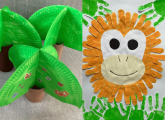
Nature crafts – Make your own rainforest
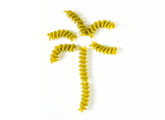
Food poverty – How can we justify trashing ingredients in the name of pedagogy?
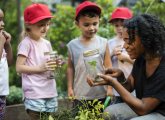
6 things we learnt from the Herts for Learning Early Years Conference 2022

Early Years Guide
Introduction.
The first few years of a child’s life are especially important for mathematics development . For many education experts, no other group represents a greater opportunity to improve mathematical standards than children in the early years.
The more grounded in mathematical concepts young children become, the better their later outcomes. Conversely, research shows that children who start behind in mathematics tend to stay behind throughout their educational journey.
On this page, we’ll examine:
- What do we mean by Early Years?
- What does learning look like in the Early Years?
- Why is Cognitive Load Theory so important?
- What mastery strategies are available for Early Years?
What do we mean when we talk about Early Years?
The UK government published the Statutory Framework for the early years foundation stage in March 2017. It sets standards for the learning, development and care of children from birth to five years old.
Areas of learning
The EYFS framework outlines seven areas of learning :
- Communication and language
- Physical development
- Personal, social and emotional development
- Mathematics
- Understanding the world
- Expressive art and design
Mathematics in EYFS
In the context of mathematics, the framework says children must be given opportunities to develop their skills in the following areas:
- Understanding and using numbers
- Calculating simple addition and subtraction problems
- Describing shapes, spaces, and measure
Revised guidance
The DfE published revised guidance in March 2021 to take effect in September 2021.
The mathematics component now incorporates many elements of the mastery approach.
Specifically, the revised framework says:
Children should be able to count confidently, develop a deep understanding of the numbers to 10, the relationships between them and the patterns within those numbers.
By providing frequent and varied opportunities to build and apply this understanding — such as using manipulatives, including small pebbles and tens frames for organising counting — children will develop a secure base of knowledge and vocabulary from which mastery of mathematics is built.
In addition, it is important that the curriculum includes rich opportunities for children to develop their spatial reasoning skills across all areas of mathematics including shape, space and measures.
It is important that children develop positive attitudes and interests in mathematics, look for patterns and relationships, spot connections, ‘have a go’, talk to adults and peers about what they notice and not be afraid to make mistakes.
Early Learning Goals
The latest framework has the following early learning goals for mathematics:
Children at the expected level of development will:
- Have a deep understanding of number to 10, including the composition of each number
- Subitise (recognise quantities without counting) up to five
- Automatically recall (without reference to rhymes, counting or other aids) number bonds up to five (including subtraction facts) and some number bonds to 10, including double facts
Numerical patterns
- Verbally count beyond 20, recognising the pattern of the counting system
- Compare quantities up to 10 in different contexts, recognising when one quantity is greater than, less than or the same as the other quantity
- Explore and represent patterns within numbers up to 10, including evens and odds, double facts and how quantities can be distributed equally
Reception class is the first year at primary school in England, generally for children ages four to five. Unlike every other school year, it’s not compulsory for children to attend Reception, though it’s a good way to introduce them to life at school.
For the community, by the community
Maths — No Problem! Community Event Conference, 28 November at The Royal Society, London.

Multi-academy trusts
Looking for impactful maths provision across your multi-academy trust?
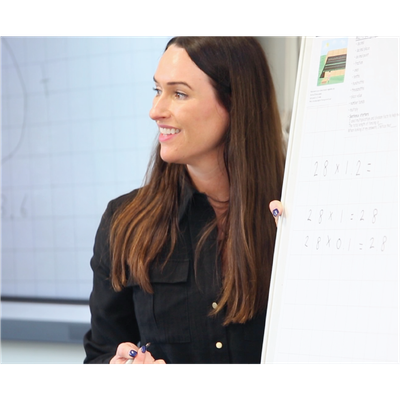
Learning in the early years
The first few years of a child’s life are especially important for mathematics development , says the National Center for Excellence in the Teaching of Mathematics.
Research shows that early mathematical knowledge predicts later reading ability and general education and social progress.
As young as eight months old, children are developing an awareness of number names , and include these in their speech, as soon as they begin to talk. As children listen to the talk around them, they are introduced to numbers through opportunities that occur in everyday life, and experience a variety of number rhymes. This supports their growing knowledge of number names.
According to the NCETM, there are:
Six key areas of mathematical learning
Cardinality and counting, composition.
- Shape and Space
Looking briefly at each in turn:
When children understand the cardinality of numbers , they know what the numbers mean in terms of knowing how many things they refer to.
Comparing numbers involves knowing which numbers are worth more or less than each other.
Learning to ‘see’ a whole number and its parts at the same time is a key development in children’s number understanding.
Developing an awareness of pattern helps young children to notice and understand mathematical relationships.
Shape and space
Mathematically, the areas of shape and space are about developing visualising skills and understanding relationships, such as the effects of movement and combining shapes
Measuring in mathematics is based on the idea of using numbers of units in order to compare attributes , such as length or capacity.
Learning to count in the early years is a fundamental skill and key to mastering mathematical concepts in the future, but there’s more to it than you might think, says Sabrina Pinnock, a primary school teacher in Yorkshire.
According to researchers Rochel Gelman and C.R. Gallistel, these are the steps needed to successfully count :
- The one-to-one principle: children must name each object they count and understand there are two groups: the one that has been counted and the one that hasn’t yet been counted
- The stable order principle: children must know how to count in the right order
- The cardinal principle: children need to understand the last number in the set is the total amount
- Counting anything: children need to realise that anything can be counted, not just objects that can be touched, but also things like claps and jumps
- Order of counting doesn’t matter: children need to understand that the order of counting in the set is irrelevant and will still lead to the same amount
Assessing children to find out which step they are struggling with is key to helping them overcome difficulties and become confident counters.
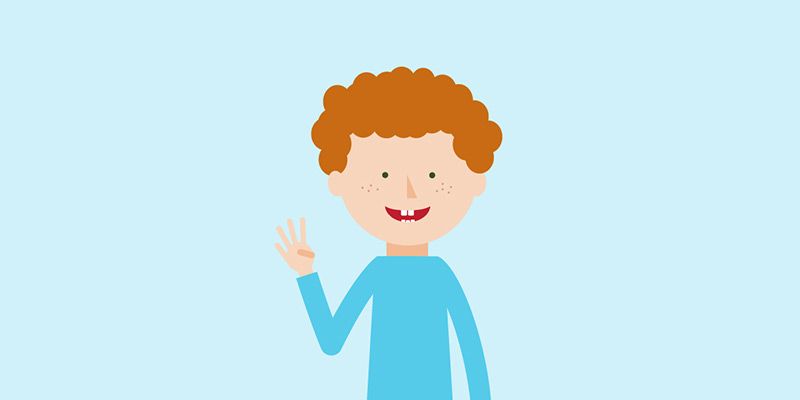
How do children develop counting skills?
Very young children start to count spontaneously and later begin to refine their skills by pointing their finger at the objects they are counting.
They will often try to get all the names of the numbers they know into their count as they pass their finger along the objects. They also reuse numbers. If they have not finished and they have used up all their known numbers, they will begin using the same numbers again. For example, a child might decide to count eight shells she collects at the beach. She might line them up carefully, tag numbers to them by pointing as she slides her finger along the shells, quickly counting out loud, “one, two, three, four, five, one, two, three, four, five, one, two, three.”
In their drive to make meaning, children are eager to experiment as they acquire new small bits of mathematical knowledge. It is extremely important to respect their developing understanding and not expect “perfect” counting sequences.
By valuing children’s partial understanding, children will develop enthusiasm for numbers and become confident mathematicians.
Activities to boost number sense in Reception Year
Children need lots of opportunities to develop number sense and deepen their conceptual understanding. Here are some simple activities to get your Reception Year learners counting:
Crowd control
Display the number of children allowed in each area using pictorial representations of cubes on a 10 frame. Once the children begin to realise how many are allowed in the area, they start to discuss the meaning of more and less. For example, “no more children are allowed in,” or “you can come in because one more than three is four.”
Encourage children to show numbers using their fingers above their head. “Bunny ears six” means they place their fingers above their head to show six. They may decide to use three fingers on each hand. As they become more confident, you could introduce swapping, where they show the same number but with a different configuration of fingers, in this case two and four, or five and one.
Grouping straws
Each morning, drop different amounts of art straws all over the carpet. Say something like, “oh no class, I can’t believe it. I’ve dropped all my straws again. They were all in 10s. Can you help me?” This activity helps children consolidate counting objects and gets them to think about stopping after they have made 10. Providing elastic bands helps them to keep track of their groups of 10.
Fastest 10 frames
This game can help distinguish between those who have developed a good understanding of number sense and those who need further support. Give each child their own frame and cubes. Tell them a number and observe how they place the cubes on the frame. If the children are working with the number eight, do they say each number name as they place the cube on the frame, or do they realise eight is two less than 10? If so, they should be able to place the cubes down faster than other children.
What do they do when you say the next number? For example, for the number five, do they automatically remove three cubes, or do they remove all of the cubes and start over counting from one to five?
Everyday questions to develop number sense
These questions for children aged five to six help develop their number sense and let them practice using mathematical terms.
When prepping lunch or a snack, count out the different types of food with your child, and as you lay the table, count out the different items. Ask your child questions like:
- How many grapes are there?
- How many tomatoes are there?
- How many plates are there?
Practice using the terms more than, fewer than and as many as by asking:
- Are there more grapes than tomatoes?
- Are there fewer tomatoes than grapes?
- Are there as many plates as people eating?
Remember to practice each sentence:
- There are more grapes than tomatoes
- There are fewer tomatoes than grapes
- There are as many plates as family members eating
When counting, make sure that you count one number for one item to strengthen your child’s sense of one-to-one correspondence.
Number Rhymes
Carefully select number rhymes to include those that children are familiar with from home. Make sure the rhymes include:
- Counting back and counting forward
- “No” or “none” (Five little ducks went swimming one day)
- Counting in pairs (two, four, six, eight, Mary at the cottage gate)
- Counting to five, 10 and beyond
Problem solving, reasoning and numeracy
The EYFS requires children to be supported in developing their understanding of problem solving, reasoning and numeracy in a broad range of contexts in which they can explore, enjoy, learn, practise and talk about their developing understanding. They must be provided with opportunities to practise these skills and gain confidence.
Young children learn best through play. For their learning to be effective, they need sensitive and informed support from adults.
All children can be successful with mathematics, provided they have opportunities to explore ideas in ways that make personal sense to them and opportunities to develop concepts and understanding. Children need to know that practitioners are interested in their thinking and respect their ideas.
Foundations
Maths — No Problem! Foundations is designed with all the theory and rigor that underpins a true mastery approach. It meets all the requirements of the national curriculum’s Early Years Foundation Stage. But Maths — No Problem! Foundations doesn’t shy away from embedding learning through play in Reception.
Genuine learning through play in the early years is something the team at Maths — No Problem! gets very excited about. What may appear to be simple games are actually carefully designed activities that have a deep maths mastery focus.
Maths — No Problem! Foundations is a complete Reception programme that includes Workbook Journals, Picture Books, and online Teacher Guides with printable resource sheets, all in one package.
The Maths — No Problem! suite of products — including textbooks, workbooks, a revolutionary online assessment tool, world-class teacher training, and much more — is based on the Singapore method, which combines 30 years of international research with painstaking craftsmanship and constant refinement.
Mark making
Research from Carruthers and Worthington into children’s mathematical graphics reveals young children use their own marks and representations to explore and communicate their mathematical thinking. These graphics include:
- Scribble-marks
- Tally-type marks
- Invented and standard symbols including numerals
Young children’s graphical exploration “builds on what they already know about marks and symbols and lays the foundations for understanding mathematical symbols and later use of standard forms of written mathematics,” the researchers said.
In a 2009 publication, the UK Department for Children, Schools and Families, says practitioners should: “Value children’s own graphic and practical explorations of problem solving” and observe “the context in which young children use their own graphics.”
Developing understanding with careful questioning
When children play and interact with other children, there are always opportunities for maths talk to help them develop a deep understanding, says Sabinra Pinnock.
For instance:
- I have made a pattern. What’s your pattern?
- How many blocks taller is my model compared to yours?
- How do we know this area is full?
- I have three cars, how many do you have?
- Do you have more?
- How do you know?
Give learners long enough to think about their answer and give their response, but not so long that it disrupts the flow of play.
Adding maths talk activities to your daily routine
Developing maths talk in your daily routine gives learners a chance to understand concepts while using real-life concepts. It also means that children can consolidate what they have learned.
The following activities can get you started:
How many children are at school?
Get your class to work out how many children are at school by placing a picture of themselves or a counter representation on large 10 frames. Ask them questions like:
- How do we know this 10 frame is full?
- How many children are absent?
- What can you tell me about number seven?
Sorting and grouping objects as a class
Sorting and grouping objects as a class helps children learn to reason and look for patterns. Give them a variety of buttons each day and ask open-ended questions like, “how can we sort the buttons?” They can use critical-thinking skills to come up with a range of ideas like sorting by size, colour, pattern, and shape.
Vote for a story
First, ask a child to pick two books. Everyone in the class gets to vote (using a piece of lego, for instance) on which of the books should be read. Tally the votes at the end of the day to determine the winner. This can lead to questions such as:
- How many more votes did one book have than the other?
The key to introducing mastery in the early years is to keep activities fun and part of your daily routine. The more learners explore maths through play, the more engaged they become.
Pattern Awareness
Dr. Sue Gifford, emeritus fellow at University of Roehampton, says recent research shows a child’s ability to spot mathematical patterns can predict later mathematical achievement, more so than other abilities such as counting. It also shows pattern awareness can vary a great deal between individuals.
Australian researchers, Papic, Mulligan and Mitchelmore have found pattern awareness can be taught effectively to preschoolers, with positive effects on their later number understanding.
Explicitly teaching pattern awareness links to encouraging “pattern sniffing” with older children in order to develop mathematical understanding and thinking.
What is mathematical pattern awareness?
Patterns are basically relationships with some kind of regularity between the elements. In the early years, Papic et al suggest there are three main kinds:
- Shapes with regular features, such as a square or triangles with equal sides and angles, and shapes made with some equally spaced dots
- A repeated sequence: the most common examples are AB sequences, like a red, blue, red blue pattern with cubes. More challenging are ABC or ABB patterns with repeating units like red, green, blue or red, blue, blue
- a growing pattern, such as a staircase with equal steps
Children who are highly pattern aware can spot this kind of regularity: they can reproduce patterns and predict how they will continue.
Why is pattern awareness important?
Spotting underlying patterns is important for identifying many different kinds of mathematical relationships. It underpins memorization of the counting sequence and understanding number operations, for instance recognizing that if you add numbers in a different order their total stays the same.
Pattern awareness has been described as early algebraic thinking, which involves:
- Noticing mathematical features
- Identifying the relationship between elements
- Observing regularities
The activity Pattern Making focuses on repeating patterns and suggests some engaging ways of developing pattern awareness, with prompts for considering children’s responses. Children can make trains with assorted toys, make patterns with twigs and leaves outside or create printing and sticking patterns in design activities.
Repeating Patterns
It is important to introduce children to a variety of repeating patterns, progressing from ABC and ABB to ABBC.
Focusing on alternating AB patterns can result in some young children thinking that ‘blue, red, red’ can’t make a pattern. They say things like, “That’s not a pattern, because you can’t have two of the same colour next to each other.”

Cognitive Load Theory
Cognitive Load Theory has gained a lot of traction in recent years as educators embrace evidence-based research to inform their evolving practice, says Ross Deans, a KS2 teacher and maths lead in Bournemouth, England.
What is Cognitive Load Theory and why is it important?
Why are new teachers so overwhelmed by tasks that more experienced teachers can juggle alongside multiple other responsibilities?
The answer is simple — new skills demand more attention.
This logic can be applied to any situation. When learning to drive, for example, you focus carefully on every small detail. That mental exertion can be very demanding. Compare that to the feeling of driving after you’ve been doing it for years; you may barely remember the drive, the process is so familiar.
Now put yourself in the shoes of your pupils. Each lesson provides fresh learning and new skills to master. Consider what happens inside your learners’ heads when they encounter new information, new skills and new vocabulary.
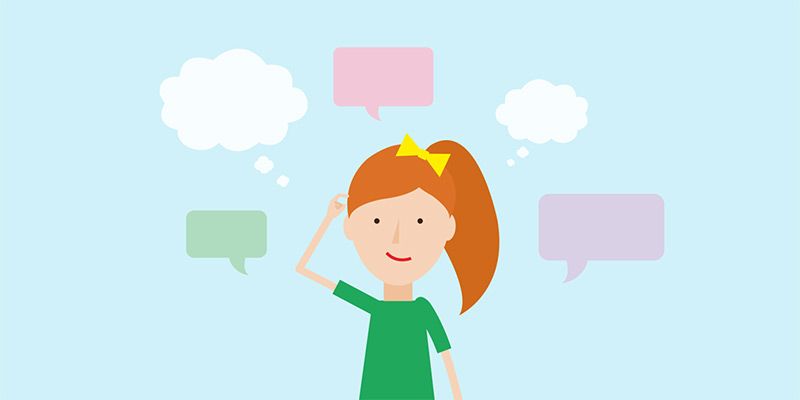
Working memory
Cognitive Load Theory , originated by John Sweller, acknowledges that working memory is very limited.
Working memory is the information we hold in our minds while we’re learning. The number of things that we can keep in working memory at one time is approximately four, plus or minus one, and perhaps even less for children.
It’s important to keep this in mind when planning and delivering lessons. If our learners cannot balance more than four things in their working memory, then we need to be very careful about the information we choose to present to them.
Intrinsic versus extraneous load
Intrinsic load includes anything that is necessary to learn a desired skill. In other words, the essential stuff.
Extraneous load is anything that will detract from desired learning. In other words, the stuff that should be reduced as much as possible.
It can be tempting while teaching to embellish lessons with child-friendly imagery and gimmicks. While It’s important to foster enjoyment, we should avoid distracting learners from the essential components of a lesson.
Supporting the transition to long-term memory
While acknowledging the impact of Cognitive Load Theory, we can consider the following to support our learners:
Focused learning objective
First and foremost, we must have a very clear idea of what we want our learners to achieve. Keep the limitations of the working memory in mind and let this guide the content you choose to include in a lesson.
Activate prior learning
At the start of the lesson, you may choose to design a task that encourages learners to retrieve essential skills. This means their working memory can hold on to new learning during the lesson.
Present information clearly
Take time when designing lessons to make sure information is presented clearly. Avoid unnecessary extras which may detract from the learning goal. Keep slides clean and similar in style.
Avoid cognitive overload
In maths, problems are often detailed and complex. Consider breaking questions up into chunks so that learners can digest each part separately. By taking away the final question, you can make a maths problem goal-free.
Maths mastery for Early Years
Given the importance of developing sound mathematical understanding in the early years, the maths mastery approach can be especially useful, considering its focus on problem solving and whole-class learning.
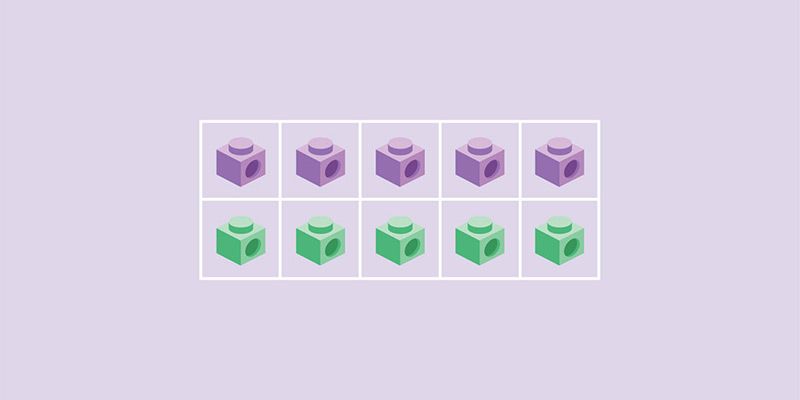
Early Years and CPA
If you’re teaching the Concrete, Pictorial, Abstract (CPA) approach in the early years, it’s best to focus on C and P. Here’s how to use concrete and pictorial representations effectively.
The CPA model works brilliantly in the primary years but for the youngest learners, moving onto abstract concepts too soon causes difficulties. Spending as much time as possible with concrete objects and pictorial representations helps children master number skills.
By the time they reach Key Stage 2, children need to develop their understanding of numbers by being able to visualise what the concrete looks like in their heads. Therefore, it’s positive that the revised EYFS framework focuses on numbers just to 10, from 20 previously.
If learners develop a deep understanding of numbers to 10, their chances of understanding larger numbers increases significantly.
C is for concrete
Concrete is the “doing” stage. During this stage, students use concrete objects to model problems. Unlike traditional maths teaching methods where teachers demonstrate how to solve a problem, the CPA approach brings concepts to life by allowing children to experience and handle physical (concrete) objects.
Spending time with real-life objects
The theorist Jerome Bruner stresses the importance of children spending time learning maths through tangible items. Spending lots of time using real-life objects, solving real-life problems, and manipulating abstract concrete objects (when ready) such as cubes and counters is essential in the early years.
Ideas include counting out fruit for snack time, comparing, sorting and counting a range of different buttons, pasta, and even ‘magic beans’ linked to specific topics.
Early years and number bonds
By mastering number bonds early on, pupils build the foundations needed for subsequent learning and are better equipped to develop mental strategies and mathematical fluency. By building a strong number sense, pupils can decide what action to take when trying to solve problems in their head.
How to teach number bonds
Children are usually introduced to number bonds through the Concrete, Pictorial, Abstract approach . Here’s just one way to introduce and teach number bonds.
Concrete step
Children start out by counting familiar real-world objects that they can interact with. They then use counters to represent the real-world objects. From here, they progress to grouping counters into two groups.
By putting five counters into two groups, children learn the different ways that five can be made. For example, 3 and 2 as illustrated below. With further exploration, children work out other ways to break numbers into two groups.
Pictorial step
Now that they understand the concept with hands-on objects and experience, children progress to writing number bonds in workbooks or on whiteboards. Early number bond explorations might simply reflect the two groups of counters that they created during the concrete step, along with other combinations.
Abstract step
With the concrete and pictorial steps done and dusted, children progress to representing abstract problems using mathematical notation (for example, 3 + 2 = 5).
Early Years and place value
Number and place value are foundational concepts for all mathematics learning. This means we need to address how to teach place value as early as possible so that pupils can secure their knowledge of the concept.
How do you develop an early understanding of place value in the primary school classroom? Let’s start by defining place value. It is a system for writing numerals where the position of each digit determines its value. Each value is a multiple of a common base of 10 in our decimal system.
Here are some teaching strategies I’ve found useful when helping learners develop an early understanding of place value.
Progress through concepts systematically
Developing an understanding of place value requires systematic progression. Each new concept should build on previous learning experiences so that pupils can gain deeper, relational understanding as they go.
This approach ensures knowledge is developed, refined and applied correctly as numbers become meaningful tools for solving problems rather than just a series of symbols on a page. Most importantly, this starts our learners on the path to becoming confident problem solvers and pattern spotters.
Use the CPA approach to establish meaning
The CPA ( Concrete, Pictorial, Abstract ) approach helps pupils connect a physical representation of a number (concrete manipulatives) to that same quantity as shown in drawings or graphics (pictorial), and finally to the actual written name and symbol for that number (abstract).
Concrete resources are meaning makers. They add meaning to abstract representations of numbers so that when learners progress to the abstract phase, they know what those numbers stand for, what they mean, and how they relate to each other.
If a pupil can identify the meaning of each component in a problem, they are far more confident in how they work to solve it.
Teach the ‘10-ness of 10’
At an early level, spend as much time as possible studying the numbers from 0 to 10, as understanding the 10-ness of 10 is crucial for maths attainment, and it cannot be rushed.
Once this understanding is locked-in, follow this with an introduction to number bonds. Start with the additive relationships between numbers less than 10, then progress to adding and subtracting up to 10. This ensures that learners see 10 as an important ‘base’ number in all of their future maths applications.
Progress to 20, then to 40
I make sure to take my time teaching 10 and teen numbers so that a solid understanding of place value with numbers up to 20 is properly established.
I then extend the place value concept by working with numbers up to 40 — followed by addition and subtraction to 40.
Because pupils have learned to make 10 and use number bonds, they are ready to begin working with multi-digit numbers and regrouping. Focusing on numbers to 40 while developing the concept of place value also allows learners to associate numbers with easily-managed, physical quantities (meaning makers).
Use base 10 blocks for 100 and 1000
The work we’ve done building a gradual understanding of place value will have prepared pupils to progress to three-digit numbers. So we can now move on to studying up to 100.
We start here by developing an understanding of numbers in multiple place value representations. For example, one thousand five hundred is 15 hundreds or 150 tens.
Once they get the hang of that, learners then sharpen their counting, reading, and writing skills for numbers up to 1,000. Moving into addition and subtraction with numbers up to 1,000 — with and without regrouping — is the next step.
Here is where our work establishing an early understanding of place value is key, because pupils will intrinsically know why these algorithms work for three and four-digit numbers. Base 10 blocks are a great tool to help solidify those earlier place value ideas when working with numbers up to the thousands.
Approach larger numbers the same way
The CPA approach is once again our answer to learning place value in larger numbers. Apply those skills and always be on the lookout for chances to extend number and place value concepts.
For example, you can identify and complete number patterns or find missing digits on a number line.
From there you can explore strategies for mental mathematics as well as addition and subtraction for numbers up to 10,000. Take learners even deeper by having them explore place value with an emphasis on multiplication, division, and decimals.
Mastering maths concepts like place value in the early years is not just key to success in the classroom. It prepares learners for a lifetime of deep mathematical understanding by giving them invaluable real-world tools like resilience and problem-solving ability.
And a confident problem solver in maths is a confident problem solver in life.
Well done on making it to the end of our Ultimate Guide to Early Years.
We’ve looked at the definition of Early Years and what the government recommends in its revised guidance, and we’ve taken a deep dive into some of the most-effective strategies for teaching mathematics mastery in the Early Years.
We’ve also discussed Cognitive Load Theory and what it means for teachers in the Early Years classroom.
If you’d like to learn more about Early Years, we recommend checking out the following links:
- NCETM: How Early Years children develop mathematical thinking (Podcast)
- NRICH: Early Years Foundation Stage Homepage
- The School of School: Episode 17 Play and early years (Podcast)
- Maths — No Problem! CPA approach
Also, don’t miss our other Ultimate Guides:
- The Maths — No Problem! Ultimate Guide to Maths Mastery
- The Maths — No Problem! Ultimate Guide to Assessment
By clicking “Accept All” , you agree to the storing of cookies on your device to enhance site navigation, analyze site usage and assist in our marketing efforts.
Ten of our favourite early years problem-solving activities
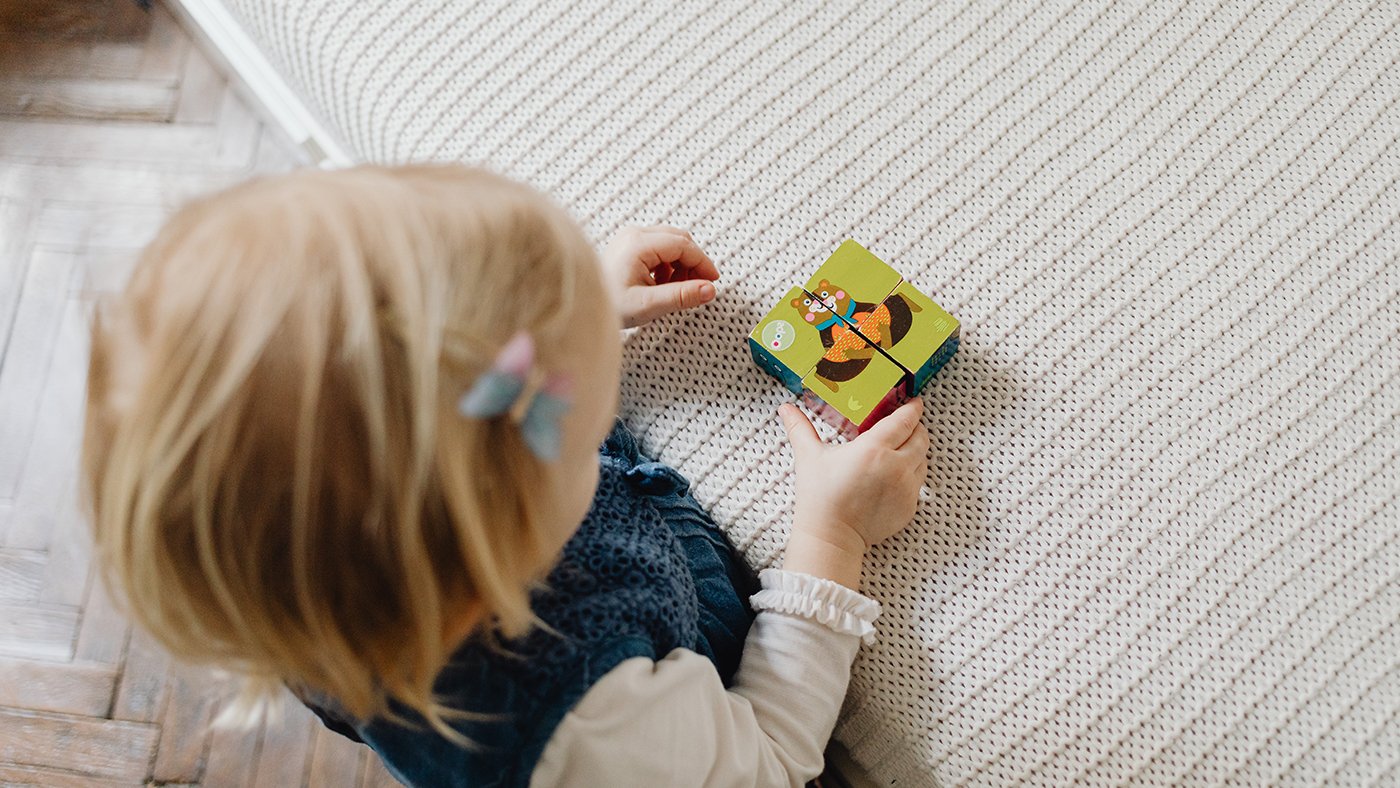
A lot of the time when we hear the term ‘problem-solving’, our brain jumps back to the tricky maths teasers from our school days, and we immediately recoil a little. However, problem-solving is much more than number conundrums.
Problem-solving is a key part of early years development and can support learning across many of the My First Five Years streams. The skill of problem-solving starts developing very early in a child's life and stems from the knowledge of the world that they are constantly building.[1]. For instance, your baby may cry when hungry as they know that crying gets the attention of an adult who can feed them.
Problem-solving is a part of everyday life for children, from being a baby through to their future adulthood. When children learn how to solve problems, it can support them in building resilience, self-confidence and self-esteem. Taking part in problem-solving activities with others can also help children develop social skills, communication and relationships.[2]
Psychologist Jean Piaget’s theory of cognitive development also focuses on the importance of problem-solving for early childhood development. In each developmental stage of his theory, the psychologist emphasised the importance of play-based learning for young children when it comes to problem-solving, and in turn building skills across the spectrum.[3]

Supporting problem-solving
When thinking about problem-solving activities for your child, it can be difficult to know where to begin.
To keep children engaged, enabling them to take the lead and follow their interests, is key. Play-based, hands-on learning makes acquiring new skills more interesting and memorable for young children.[4]
Many activities can support children when developing their problem-solving abilities – the possibilities are wide open. When considering which problem-solving activities are the most effective, it is also important to consider how they can be adapted to multiple interests, abilities and how accessible they are when it comes to using resources and materials.
To help you out, here are ten of My First Five Years’ favourite problem-solving activities that you can try with your child.
1) Den-building
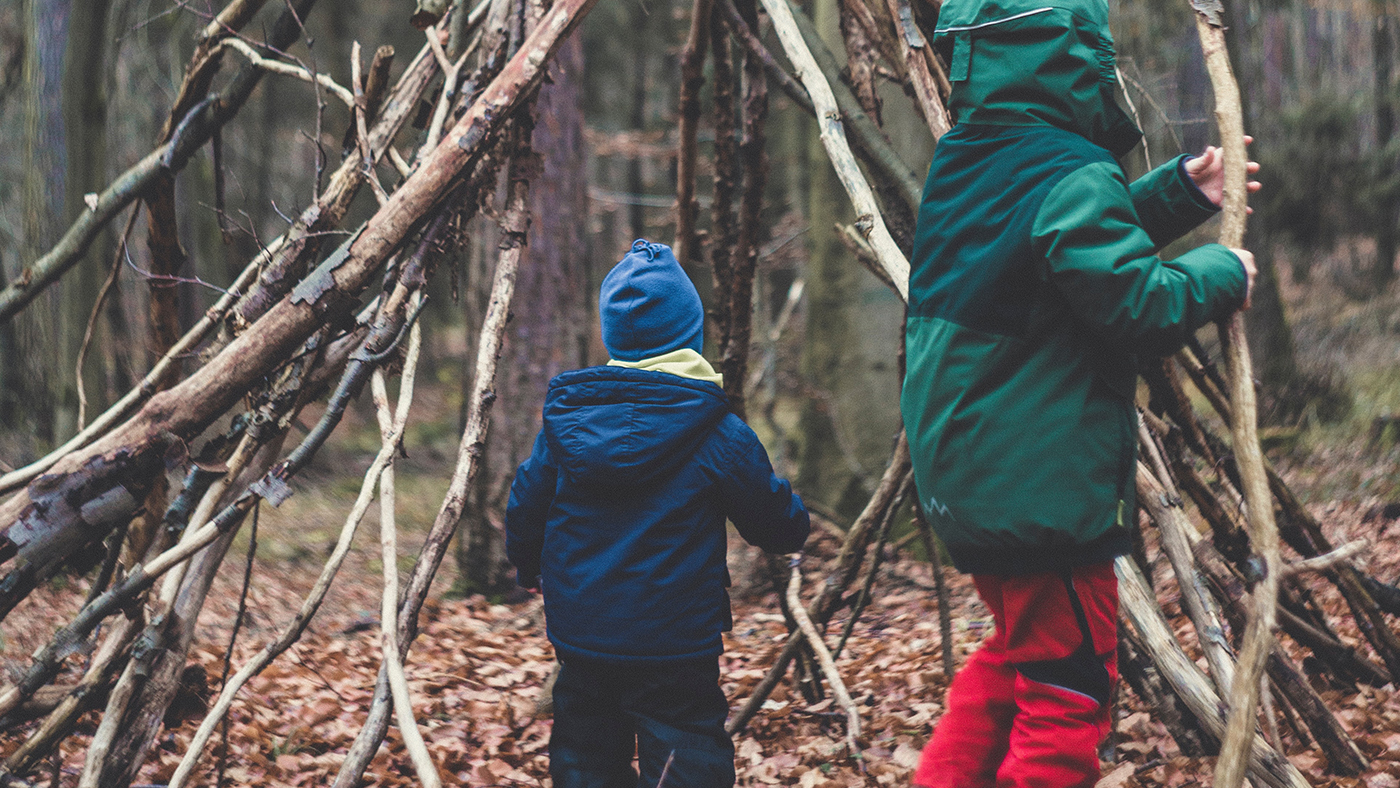
Den-building is brilliant for problem-solving as it requires creative and critical-thinking, foresight, and planning. It is also a wonderful way to promote sustained shared thinking with your child. Sustained shared thinking is a way of working together that encourages individuals to evaluate the problem that they are working on and is focused on collaboration, using experiences and prior knowledge.[5]
When building a den with your child, encourage your child to take the lead. You could provide materials such as boxes and blankets, or you could even ask your child to decide what materials you need before starting, encouraging them to plan out their work. Den-building can also be done both indoors and outdoors and with children from a young age. You may find that people have already started creating these in your local woodland that you can add to, adapt, or just enjoy!
2) Cooking and baking
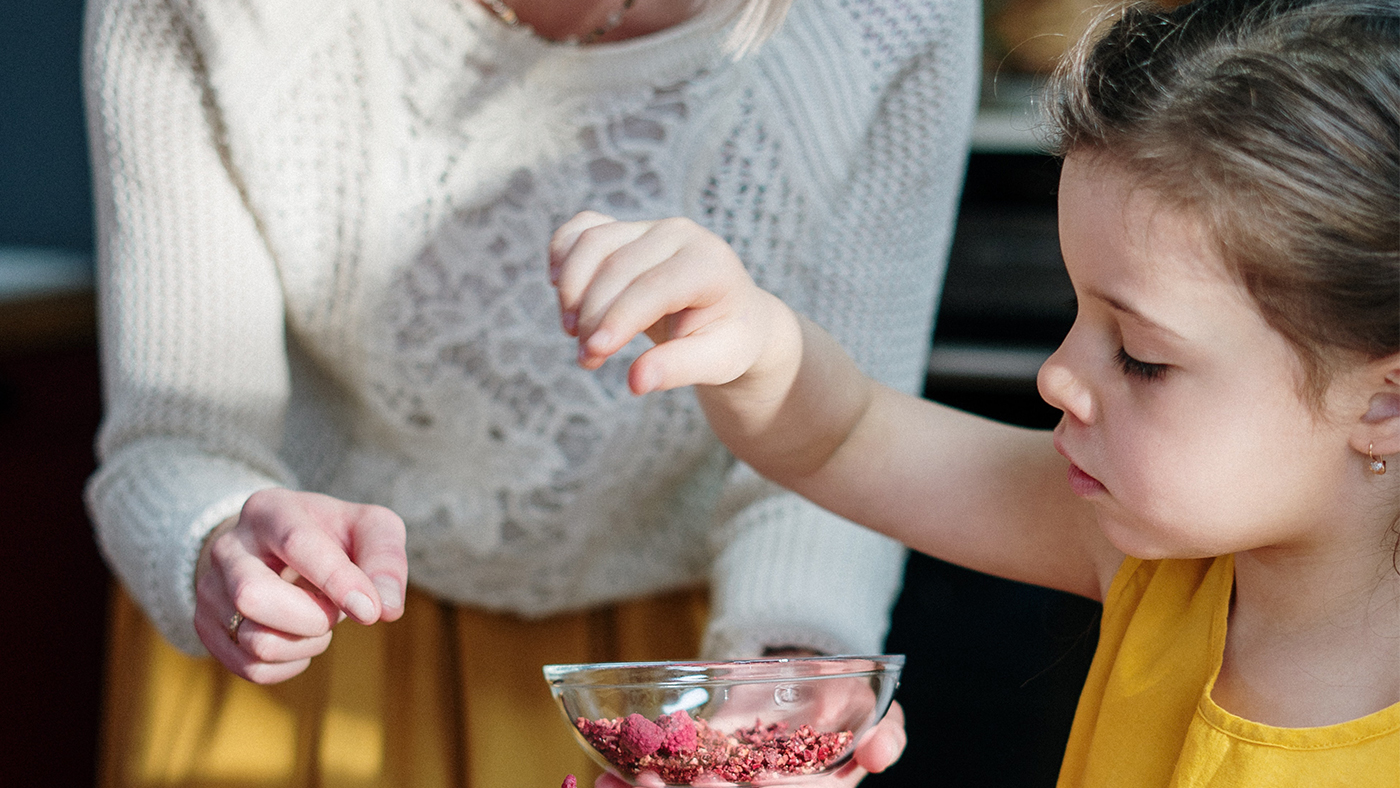
Cooking and baking are not only fun activities, but they also focus on mathematical problem-solving. To bring problem-solving into a cooking and baking activity, you can ask your child to count out simple measurements, for instance, cups of flour or sugar. Activities like cooking or baking are great for children to be able to take ownership of what is happening; encourage them to choose what you will make and allow them to do all the elements themselves.
What’s great about cooking is it really doesn't matter how it turns out! Problems can arise often in cooking or baking, for example, the mixture may turn out too dry, you may be an ingredient short, or your cakes might not rise how you expected them to. If this is the case, talk to your child about what might have gone wrong and how you can rectify it next time! Then when they come to do it again, they can use their prior knowledge to help them.
3) Playing with patterns
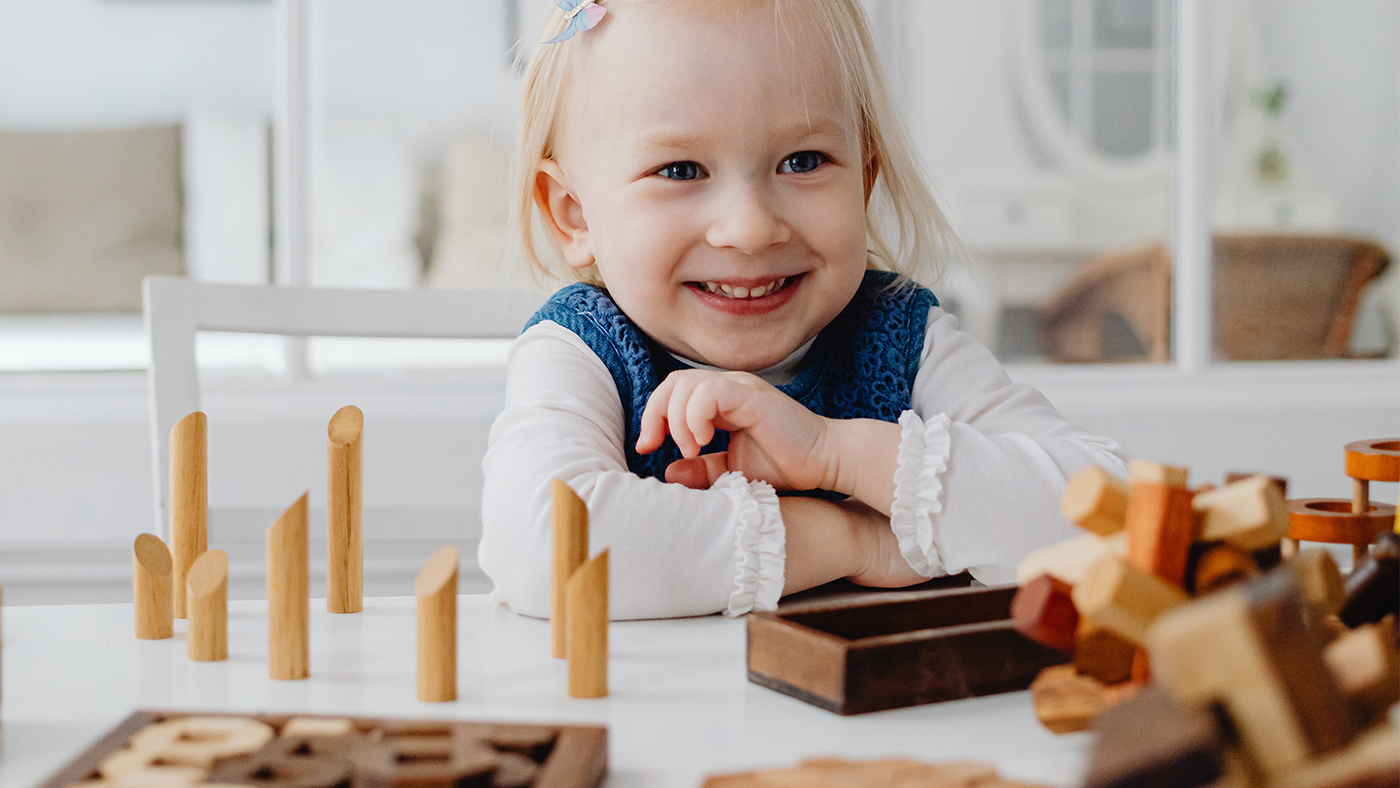
Patterns are a great activity for mathematical problem-solving. You can create patterns of any objects that you can find! For example, with pieces of fruit, pebbles from the garden, building blocks or even snacks! You could encourage your child to continue patterns, fill in the missing pieces or even create their own for you to solve problems with as they grow more confident.
4) Sorting and categorising
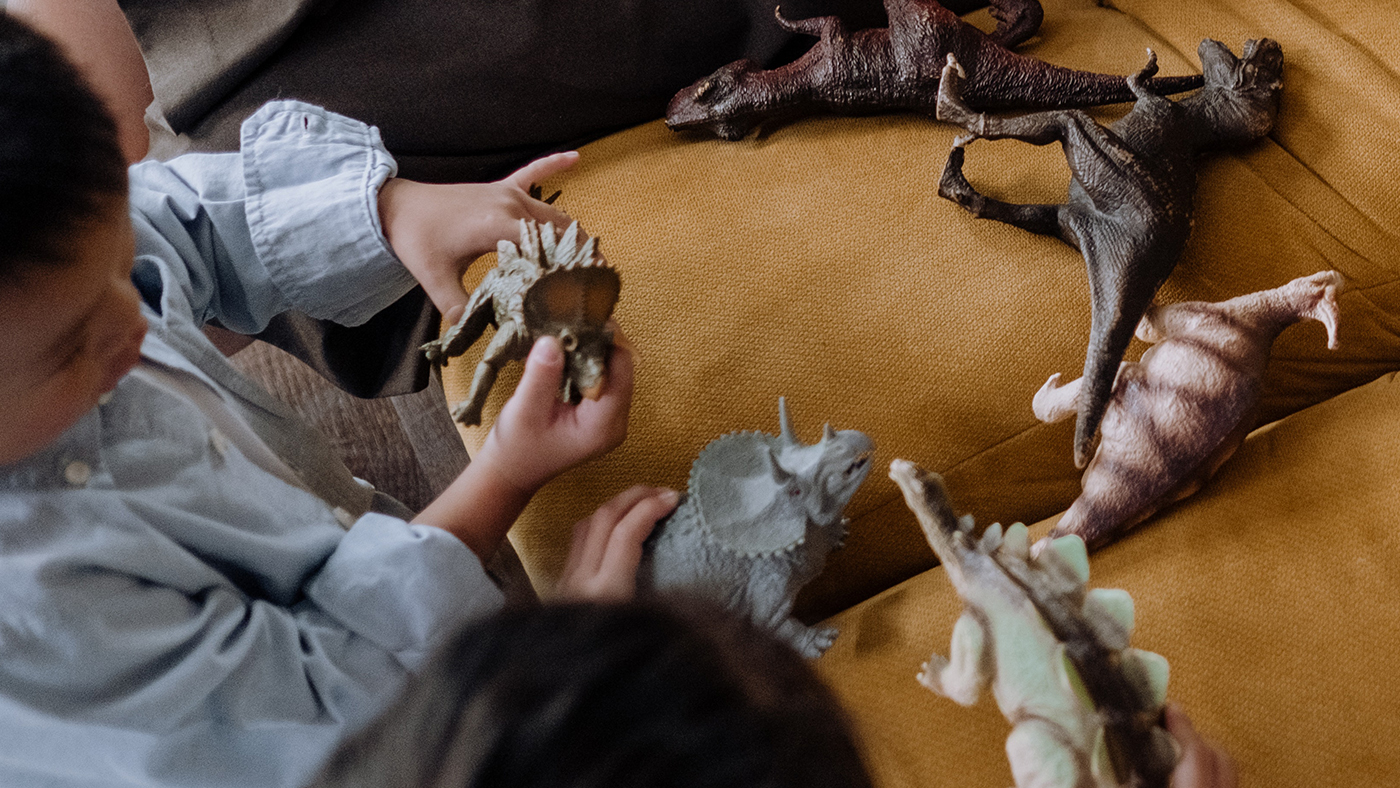
Sorting and categorising objects is an activity that supports children in mathematical problem - solving and can be easily adapted to individual children’s abilities . You could encourage your child to sort by shape, size, colour, or better yet , their interests . For example, if they are a dinosaur enthusiast, they could classify them by wh ich is their favourite or least favourite , or order them by the size of their feet. They may even find enjoyment in helping you with daily sorting such as recycling or washing!
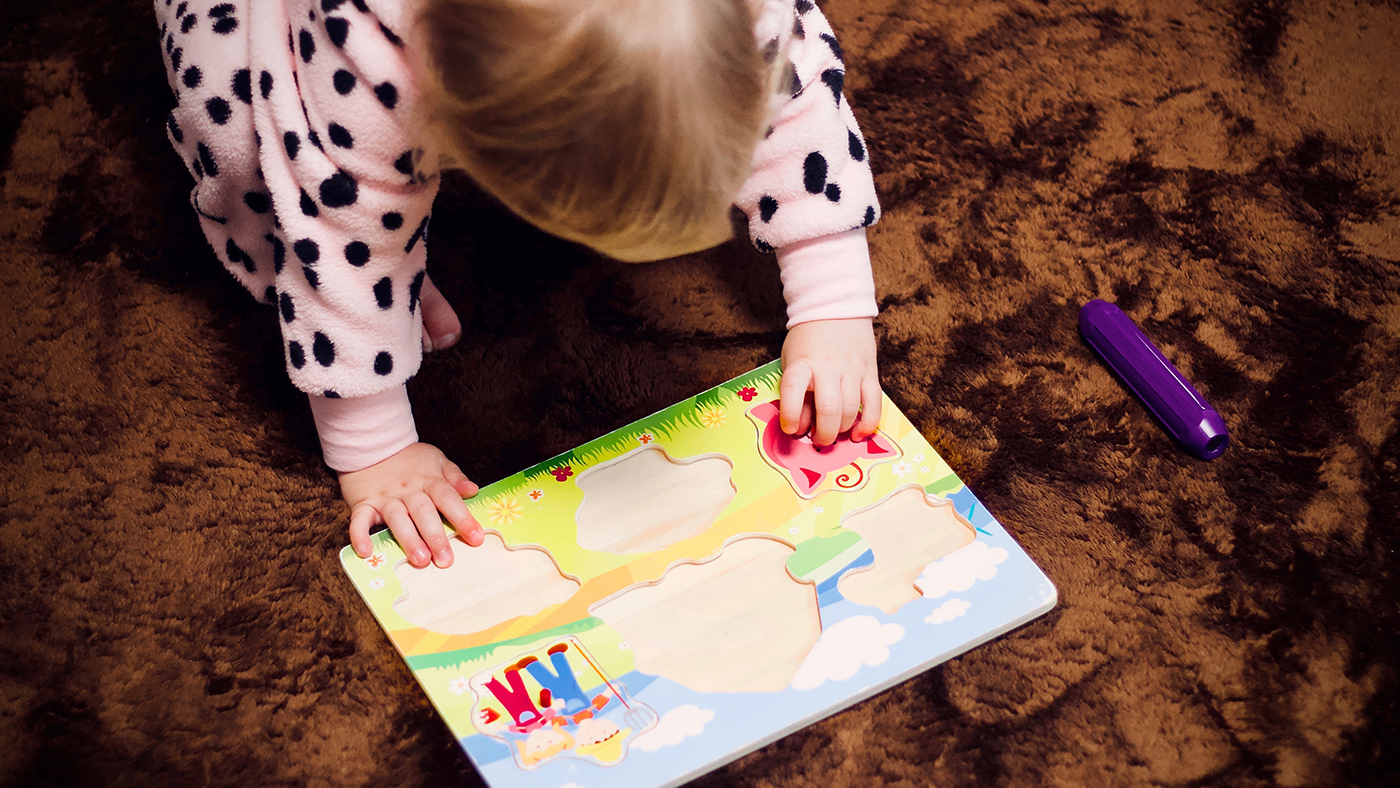
Puzzles are a fun resource that can be used with children from a very young age. There are a wide variety of puzzles for children to access , such as chunky wooden puzzles or traditional shape sorters. When playing with puzzles, children will have to use their prior knowledge and experience of shape, space and measure whil e also experimenting with different angles and placements. They will use trial and error to find the best way to complete the puzzle and then will use this knowledge in future attempts.
6) Ice rescue
As well as being a great problem-solving activity, ice rescue enables children to explore seasonal changes, temperatures and develop their fine and gross motor skills using tools. To play ice rescue, freeze toys inside ice overnight. This could be in cake moulds or small bowls. Use toys that will motivate your child, for instance, their favourite small figurines.
Once frozen, place your blocks of ice in a big bowl or tray, and encourage your child to think about how they can get the items out. You could provide tools, or even get your child to find tools themselves.
7) Obstacle courses
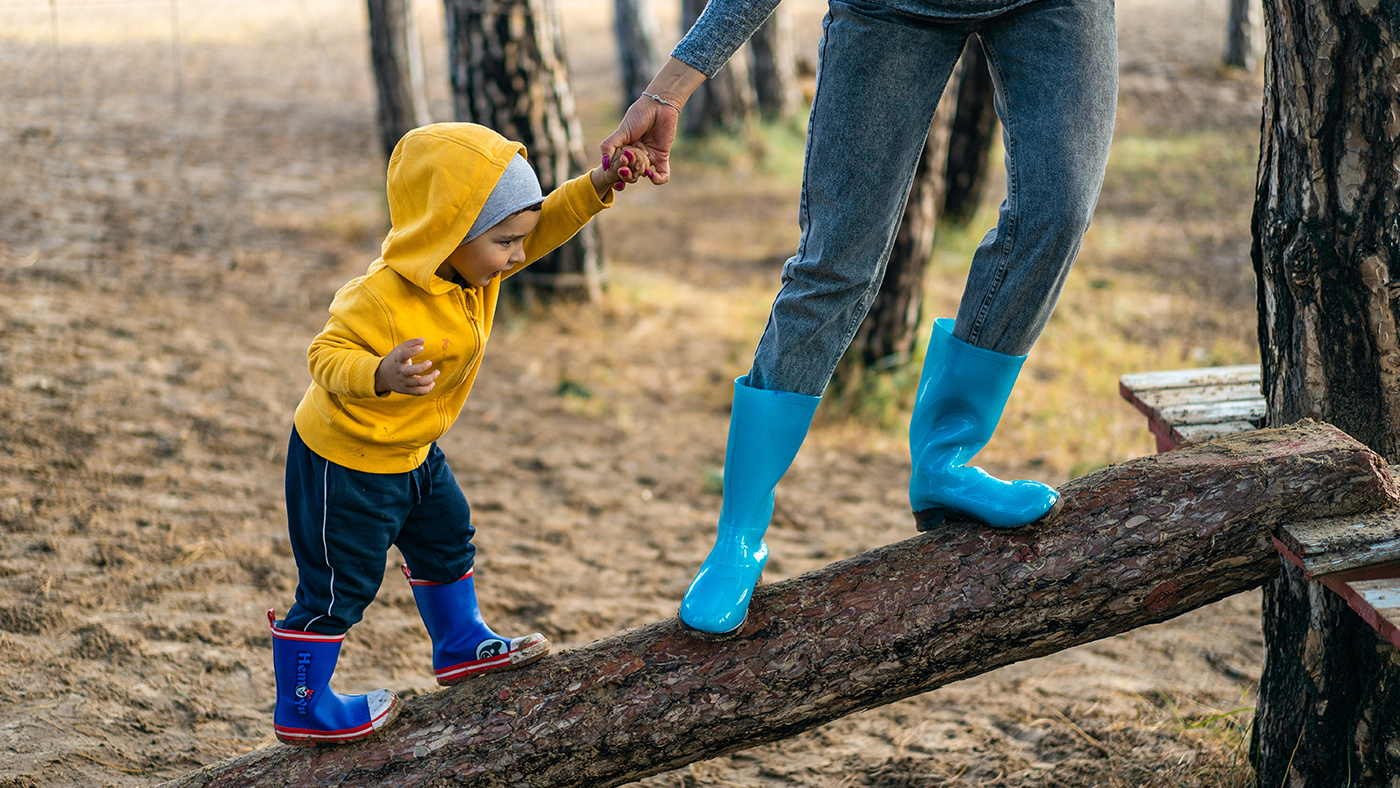
Obstacle courses are versatile and can be made with a wide variety of resources. When setting up an obstacle course for your child, try to include sections where your child will have to stop and think about how they will have to adapt their body to move through it , for example, something that they must climb over or under, or a section where they have to move differently. You could even include them in trying to create the obstacle course and allow them to make it the most challenging they can.
8) Filling, emptying and investigation
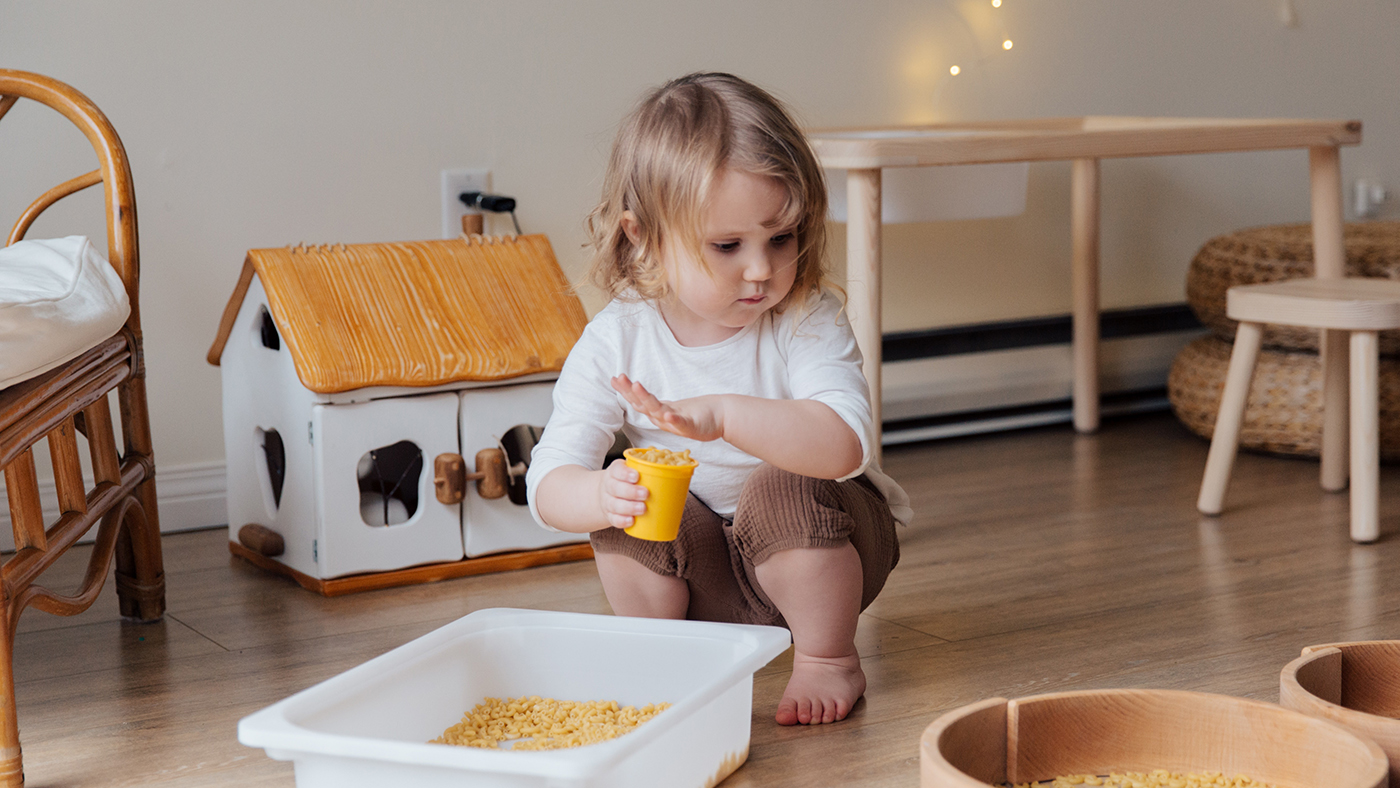
Many children enjoy filling and emptying during play. Investigating this way helps children to get a sense of size, capacity and explore predicting and estimation. For instance, if your child likes playing with sand, you could ask them to guess how many scoops they will need to fill a container, or if they like water play you could challenge them to find a way to move the water between two containers as quickly as possible , or from one tray to another.
9) Story problems
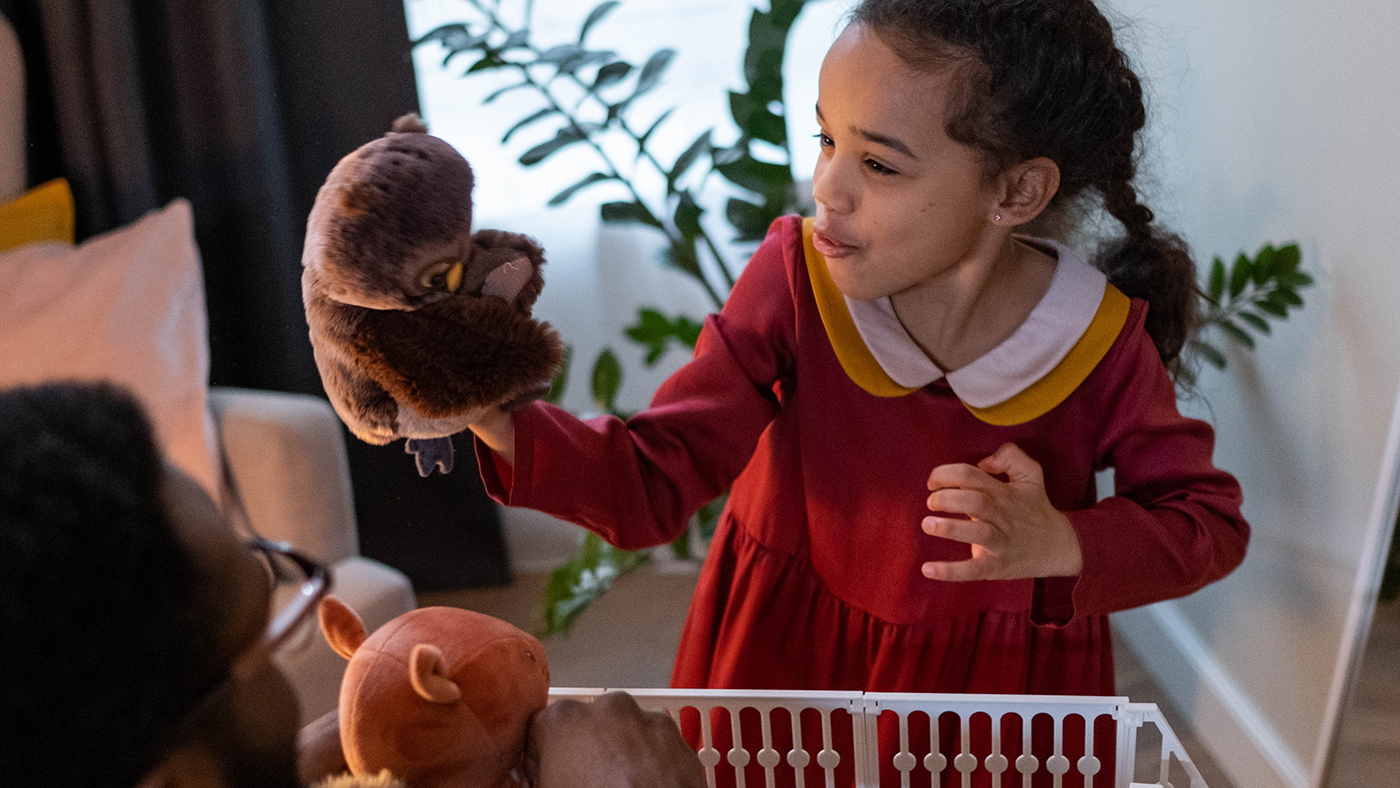
Stories are an effective way of introducing problem-solving and they can be a highly engaging way to promote creative and critical-thinking. You could use familiar or traditional stories to help scaffold play opportunities for your child. For example, you could try building a house for the three little pigs that cannot be knocked over. You could test out different methods using materials that you can find around your home.
If you are feeling creative, you could also make up a little story using your child’s favourite toys. An example of this could be figuring out how to share food between their favourite teddies during a picnic and making sure that everyone gets enough.
10) Playing with loose parts or open-ended resources
Natural materials such as leaves, conkers, sticks, acorns, and pinecones are all brilliant open-ended play opportunities (if supervised). You can also use household objects like bottle caps, curtain rings, tubes, tins, boxes, buttons etcetera in this sort of play. All it requires is a tray of different objects that you've collected and time to explore them. Your child will have to think creatively about how to utilise the objects and in doing so will be challenging their cognitive capacity by problem-solving to achieve the desired outcomes.
References
[1] Rachel Keen. (2011). The Development of Problem Solving in Young Children: A Critical Cognitive Skill. Available: https://www.annualreviews.org/doi/full/10.1146/annurev.psych.031809.130730#_i22 .
[2] Sheila Ebbutt. (2009). EYFS best practice - All about ... problem-solving . Available: https://www.nurseryworld.co.uk/features/article/eyfs-best-practice-all-about-problem-solving .
[3] Piaget, J. (1983). Piaget's Theory. In P. Mussen (ed). Handbook of Child Psychology. 4th edition. Vol. 1. New York: Wiley.
[4] Unicef. (2018). Learning Through Play. Available: https://www.unicef.org/sites/default/files/2018-12/UNICEF-Lego-Foundation-Learning-through-Play.pd .
[5] Kathy Sylva, Edward Melhuish, Pam Sammons, Iram Siraj-Blatchford and Brenda Taggar. (2004). The Effective Provision of Pre-School Education (EPPE) Project: Findings from Pre-school to end of Key Stage1. Available: https://dera.ioe.ac.uk/8543/7/SSU-SF-2004-01.pdf .
T&C's | Privacy Policy | Cookies
© Copyright 2023 - My First Five Years Ltd.
- Teaching & Learning
- Early Years
Problem-solving in early maths: 3 simple teaching tips
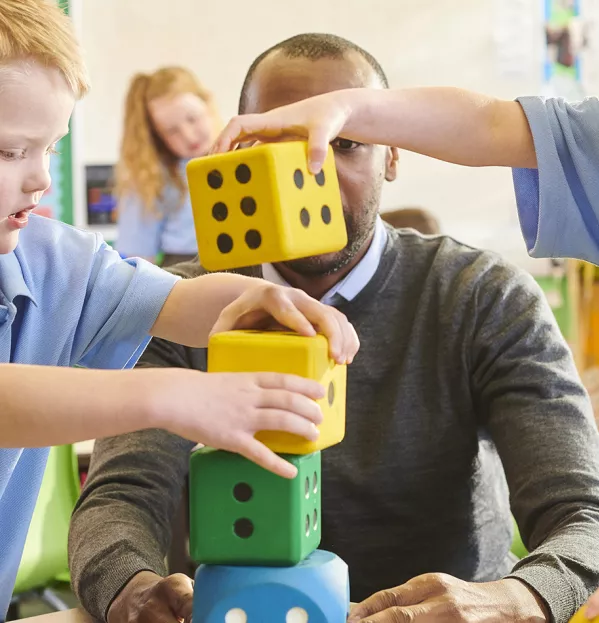
This article was originally published on 7 January 2024
E d has made an enclosure for dinosaurs using four wooden blocks. He wants to make sure the dinosaurs can’t escape.
“Interesting, I can see the dinosaurs are all locked inside the enclosure,” says Ed’s teacher, “but the tyrannosaurus rex is very tall. I think it would be able to climb out? Is there something you could do to stop him escaping?”
Ed fetches four more blocks and stacks them on top of his enclosure, making it taller.
“Good thinking, Ed,” says the teacher, “but we can still see his head, so it might need to be taller. There are no more long blocks for you to use. I wonder what you could use instead?”
“I think lots of these shorter ones might fit on the top,” says Ed.
- What would “phonics for maths” look like?
- Is this the “right” way to teach early maths?
- How to develop number sense
There are frequent opportunities for mathematical problem-solving throughout a typical day in an early years setting. But how can we ensure that we maximise their impact when they arise?
The Education Endowment Foundation’s Early Years Evidence Store identifies approaches that educators can use to support young children’s early maths learning and development, while providing a summary of the evidence behind each approach.
Created as part of the EEF’s work supporting the Department for Education’s Stronger Practice Hubs, the store has been co-developed by researchers and educators.
The newly published Early Mathematics theme recommends five approaches for supporting children’s maths development:
- Teaching the association between number and quantity.
- Promoting fluency with numbers and sequences.
- Teaching problem-solving skills for maths.
- Teaching and modelling how to make comparisons and connections.
- Facilitating mathematical language.
If we look at the third approach, teaching problem-solving skills for maths, this covers how we teach children to apply purposeful thinking, communicate their ideas and use manipulatives to solve problems.
Strategies for teaching early mathematical problem-solving skills
Evidence and experience tell us that explicitly teaching problem-solving skills can be effective when combined with other approaches, especially when matched to children’s level of development.
A multi-pronged approach is particularly important for children from lower-income families or those at greater risk of not meeting expected levels of development. Sequencing learning and breaking tasks down, as well as modelling problem-solving strategies, can also help to improve outcomes.
But what does that look like in practice?
1. Thinking aloud
In the example at the start of this article, Ed’s teacher models her mathematical thinking aloud, encouraging Ed to do the same. Deliberate modelling, meanwhile, provides opportunities for the teacher to suggest additional challenges for Ed’s play in manageable chunks.
2. Modelling using representations to solve a mathematical problem
Educators can encourage children to use representations in different contexts to scaffold understanding.
This could be through using drawings, fingers or objects, such as pinecones or cubes. For example:
Ben is playing with a friend in the mud kitchen. They plan to make “fir cakes” for the teddy bears they have set up on the picnic bench.
Their teacher asks them how many cakes they will make. Ben tells her, “Four, so there is one each.” Andrea encourages Ben to use his fingers to check this, as she points to each teddy.
The teacher counts aloud as Ben lifts each finger, stopping at five.
“I need five cakes then,” Ben says.
“Yes,” the teacher agrees, “you need one more cake, and then there is one for each teddy”.
3. Reminding
Educators can prompt children to remember and apply a previous strategy to solve a mathematical problem. For example:
During welcome time, the teacher asks the class how they can find out how many children are here today, using their self-registration board.
“We can count them,” says Amrita.
“Yes, you are right; we can count the children. Is there a way we can do it that helps us count them correctly?”
The children aren’t sure, so the teacher reminds them: “If we move the photos one by one into the basket as we count, it’ll make sure we only count each photo once.”
Amrita then moves the photos one at a time into the basket as the children count in chorus to work out how many children are at nursery today.
Lauren Grocott is an early years specialist for the Education Endowment Foundation (EEF)
For more examples of how to teach problem-solving, including narration and using mistakes as teaching and learning opportunities, visit the Early Maths theme of the Early Years Evidence Store
Want to keep reading for free?
Register with Tes and you can read two free articles every month plus you'll have access to our range of award-winning newsletters.
Keep reading for just £1 per month
You've reached your limit of free articles this month. Subscribe for £1 per month for three months and get:
- Unlimited access to all Tes magazine content
- Exclusive subscriber-only stories
- Award-winning email newsletters
topics in this article


10 fun maths activities for the EYFS
With Famly since
In a rush? Here's a quick breakdown:
- Maths is one of the important developmental areas for the Early Years. But, for many of us, it's harder, or not our favourite.
- But, with these creative maths activities, the children will learn to love numbers, counting and other maths skills.
- Plus, they develop other skills too, like fine motor skills.
Maths in the Early Years is a crucial stepping stone for children to develop, which is why it’s so important that the little ones can explore and experience it in an enjoyable way. We’ve carefully chosen some fun activities and games to promote early maths learning of numbers through play.
Want to see how it’s done? Click here to watch the video of our five favourite activities ⏯

1. Combine maths skills with fine-motor skills.
Number Hunt in Jelly by Hazeldene Family Centre
This fun maths activity:
First, spread out some plastic numbers in jelly layers. When it’s all set, give out some tongs to children and show them how to pick up the numbers from the wiggly substance ( and practice their fine motor skills along the way! ). This sensory play is a great way of sneaking in number recognition into some sensory play.
What you need:
- Plastic Numbers

2. How do you make maths activities fun? Add Lego!
DIY Lego Pattern Cards by A Crafty Living
This fun maths game:
Lego. Useful in so many different ways , including making mathematics exciting. Prepare some cards with colourful blocks on them and let children discover colour patterns and reproduce them with LEGO bricks. Consider leaving the colouring part to your little learners so they can form their own patterns and include some EAD in the mix too. It's a win-win!
- Paper Cards
- Coloured Pencils
- LEGO Blocks

3. Challenge the children's maths skills to solve a missing number mystery
Missing Number Math Activity by Planning Playtime
This Early Years maths game:
Write number sequences on craft sticks and remember to leave some blanks in between. Next, you write the missing numbers on some clothes pins and give them out to the players. Now the children use their fine-motor skills and clip the pins on sticks and complete the sequence. The best thing about this fun and inexpensive maths game is that you only create the props once and they’re ready to be used as many times as you like.
- Craft Sticks (colour or plain)
- Clothes Pins

4. A simple game of swat the number.
Smack the Number Counting Game by Fun Learning for Kids
Prepare some sticky notes with various numbers and place them in front of the children armed with fly swatters. Roll the dice to get your target number. The goal of this simple yet fun game is for the little ones to identify the number on the dice and match it with the ones written on sticky notes by smacking the correct answer with a fly swatter!
- One or two dice
- Fly swatter
- Sticky notes

5. Playing with pom-poms to promote problem-solving skills
Straw and Pom Poms Counting Game by Nurture Store
Label small containers with some numbers that you’d like your learners to practice and prepare some straws and pom poms. For this fun maths activity, the kids simply put the straw on a pom-pom and suck in, to try and pick it up. Then they drop it over the containers until they’ve got the right number in each one.
- Shallow containers
- Labelled stickers (or any paper, glue and marker)
Get 50 free EYFS activities
.png)
6. A fun maths game to drive you dotty!
Number Dots and Easy Touch And Count Activity by Busy Toddler
Tape some paper to the wall and write several numbers, each decorated with dots, to match the quantity the number represents e.g. 4 dots on the number 4. Now, the players can touch each dot with a marker and see the number and the quantity altogether! You can also put the paper on the floor but holding a marker up and out makes this not only a fun game for early years maths but also a good way to strengthen those little arm muscles.

7. A magnetic, mathematical, magical fishing game
Magnetic fishing number game by Messy Little Monster
This Early Years maths activity:
First, you or the children need to cut your paper into fish shapes and add a paperclip. Next, write the numbers on the fish using a pen. For the fishing rod, tie some string (with a magnet on the end) to your stick! Now the whole class can 'fish' for numbers!
- Card/ Paper (or old pieces of artwork) to cut into fish shapes
- Paper clips
- Magnets, preferably some too large to be swallowed.
- Stick or long piece of wood
N.B. Always supervise children very carefully with magnets.

8. Fun maths activities are eggs-actly what we're looking for!
Egg Cracking Counting Activity by Modern Preschool
Looking to 'hatch' a plan for some fun maths games? Create ‘eggs’ by cutting out oval shapes from cardboard and writing different numbers on them. Students identify the numbers and 'crack the eggs' by punching the corresponding number of holes in them - you could always make one first, as an example. This exercise can also help develop muscles in those minute hands.

9. More fun in maths? Make it musical!
Top 10 Counting Songs by Super Simple Songs – Kids Songs
According to the BBC “When children are singing they are taking in information and training the brain but they don’t think they are, they think they are just having fun. Singing is an aerobic activity that boosts oxygenation in the bloodstream, increasing mental alertness”. We agree! Check out these 10 lovely songs to give it a go.
- A way to play music
- Your voice!

10. Matching with maths - a classic game with a mathematical twist.
Valentine Math Activity – Broken Heart Numbers by Fun a Day
Sometimes the most fun games are the classics. A simple matching game for one player, two players, or the whole classroom! Simply cut out some hearts and cut each in half using different zigzags, squiggles and other connecting shapes. Then write a number on one side and draw a corresponding number of hearts on the other. Well done, you’ve just created puzzles! Challenge the children to see who can find the matching hearts card to their number cards.
- Paper or card
Whoops! Looks like you need to accept marketing cookies to see this video. Don’t worry - they’re fresh out the oven.

The big ideas
Official Danish Government Reopening Advice
Guidance from the Danish Health Ministry, translated in full to English.
.jpg)
UK Nursery Covid-19 Response Group Recommendations
The full recommendations from a working group of over 70 nursery chains in the UK.
Please note: here at Famly we love sharing creative activities for you to try with the children at your setting, but you know them best. Take the time to consider adaptions you might need to make so these activities are accessible and developmentally appropriate for the children you work with. Just as you ordinarily would, conduct risk assessments for your children and your setting before undertaking new activities, and ensure you and your staff are following your own health and safety guidelines.

Matt Arnerich
Matt Arnerich is Famly's Director of Brand & Comms. He looks after the story of what makes Famly different, helping us to get closer to our mission.
You might also like

10 EYFS Literacy Activities to Make Development More Fun
Zuzanna Stańczewska
July 26, 2017

10 green ideas to explore gardening with children
Marcus Fogg
April 28, 2021

The EYFS Activity Library: 50 EYFS Activities
August 18, 2023
Get 1000s of free EY activities
Want over 7,000 activities? See them in a free 14-day trial. Filter to target learning areas, age groups and topics, and get inspired.

Education Endowment Foundation:EEF blog: Thinking Aloud to support mathematical problem-solving
Eef blog: thinking aloud to support mathematical problem-solving, keep-up-to date with our latest news and resources.
Our News Alerts are e‑mailed to 45,000+ subscribers regularly.
Page generated on: Friday, 23 August 2024 at 18:40 (E)
The Education Endowment Foundation (EEF) is a charity and a company limited by guarantee. Registered in England, Number 114 2111 © 2024, Education Endowment Foundation, all rights reserved.

Early Years Maths: Problem Solving Through Stories
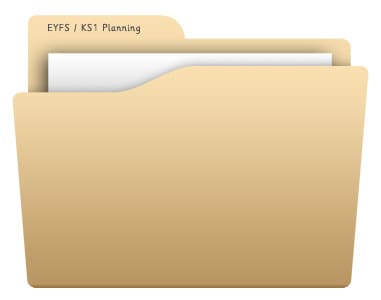
- Share on Facebook
- Share on Twitter
- Share on Pinterest
About This Primary Resource
An Early Years maths activity from NRICH about trying to solve problems step-by-step by recording all the data you know. This activity uses a story called Pirate Panda and asks the children to decide what the main character should do with all the gold coins he has found, should he keep them or share them out with his friends? This plan encourages children to practice their counting and reasoning skills, as well as discussing the story and recording their findings. This lesson plan has been kindly shared with us by NRICH, a mathematics project set up by Cambridge University which provide support for those either teaching or learning maths. NRich is run by a group of qualified teachers who work in partnership with teachers and schools to help develop mathematical thinking and problem solving skills. To find out more about NRich, or to download more high quality lesson plans, go to their website: www.nrich.maths.org/frontpage .
Resource Download Options
Download Free PDF (English)
This looks like a great lesson activity!
Thank you will enhance enjoyment of teaching and learning
I need mathematics story in mathematics teaching and learning
Leave a Reply
Your email address will not be published. Required fields are marked *
Related Primary Resources
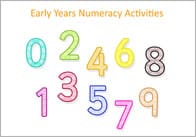
Early Years Numeracy Activities
Popular teaching resources.
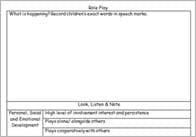
Stay Up To Date
Sign up for our newsletter and we’ll let you know when we create new early years resources.
We will never share your data, but may include relevant messages from our partners in our newsletters from time to time. View our privacy policy .
Sections You Might Like
- Photo Packs
- SEN Resources
- The Weather
Popular searches in the last week:
- Maths: Open-ended Investigations
- Mathematical Problem-solving
Reception Maths: Open-ended Investigations Mathematical Problem-solving
Problem-solving tasks develop mathematical skills and problem-solving tactics. These open-ended investigations for Reception or Early Years settings are designed to take advantage of outdoor learning environments, but many of them can be adapted to run inside.
Session 1 Shape
Open-ended investigative tasks provide fun, stimulating contexts in which children can connect previous knowledge with new situations, develop mental flexibility, practise mathematical vocabulary and reason mathematically.
Print the sheets and stick them up in suitable play areas. They provide stimulating questions that will enable adults in your classroom to facilitate good mathematical language and learning. Each illustrated activity comes with a list of skills practised that you can use for assessment.
Open-Ended Task
Shape Hunt By looking for and finding shapes, children gain an awareness of similarities of shapes in the environment. They match shapes by recognising similarities and orientation, show curiosity and observation by talking about shapes and begin to use mathematical names for shapes.
More Shapes By looking for and finding shapes formed by windows, children gain an awareness of shapes, practise matching them, and begin to use mathematical names for them. Use language such as ‘square’ to describe the shape of solids and flat shapes.
- More Shapes
Sorting While playing with and arranging twigs, stones, leaves, etc., children can be encouraged to take an interest in shape and space. They can talk about similarity and difference, while sorting objects. Developing mathematical ideas and methods can be used to solve practical problems.
Session 2 Position and Direction
Trails Remember… just about anything you do indoors in maths can be done outside. Some children ‘come alive’ once out of the classroom and may just surprise you with the observations they make or the learning behaviours they show.
Scooters, Bikes, Trikes Riding a scooter, bike or trike prompts counting, consideration of same and different, and position and spatial properties.
- Scooters, Bikes, Trikes
- The Mathematical Journey
Obstacle course Children use everyday language to talk about position, distance and time when running, or walking, an obstacle course. They compare quantities and objects and solve problems.
- Obstacle Course
Milk the Maths: Wellies Encourage children to use everyday language to talk about position whatever they are doing! Putting wellies away is a colourful opportunity.
- Milk the Maths
Session 3 Number and Shape
Holes When digging holes children can use number names in order in familiar contexts. They can use everyday language to talk about size, capacity, position, distance and time. Holes offer fun opportunities to compare quantities and objects and to solve problems.
The Mud Kitchen Ask children questions about shape, space and measure while exploring mud. Consider similarities and differences.
- Mud Kitchen
Planting and Gardening While working in a school garden, children can practise using numbers to identify how many objects there are in a set. They say and use number names in order in familiar contexts, and count everyday objects.
- Planting and Gardening
Hoist Playing with a bucket on a hoist, children can use numbers to identify how many objects there are in a set. They can use everyday language to talk about size, capacity, position, distance and time and compare quantities and objects and to solve problems.
Session 4 Number and the Language of Addition/Subtraction
Leaves When playing with leaves, children have opportunities to see that numbers identify how many objects there are in a set and to say and use number names in order in familiar contexts. They can begin to use the vocabulary involved in adding and subtracting. They can relate addition to combining two and subtraction to ‘taking away’.
Tin Can Alley Play with cans to explore number names in familiar contexts and to.count up to 10 everyday objects. Children can begin to use the vocabulary involved in adding and subtracting and to relate addition to combining two groups of objects and subtraction to ‘taking away’.
- Tin Can Alley
Sand to Sandpit Children can fill a sandpit (or move sand from one place to another) and count up to 10 everyday objects and begin to use the vocabulary involved in adding and subtracting.
- Sand to Sandpit
Logs Put logs onto a trolley and say and use number names in order in familiar contexts. Count and use vocabulary involved in adding and subtracting. Show curiosity and observation by talking about shapes. Begin to use mathematical names for shapes.
More Logs Playing with logs offers countless opportunities to practise counting! Children can also begin to use the vocabulary involved in adding and subtracting and to relate addition to combining two groups of objects and subtraction to ‘taking away’.
This site uses cookies to give you the most relevant information. Learn more
Log in or sign up to get access to this resource
School subscription, reduce teacher workload.
From £155 (+ VAT) per year. Access to all key stages for multiple users.
Individual Subscription
For inspirational teaching.
Just £45 (£37.50 + VAT) per year to get access to all resources.
Early Career Teacher
Develop your teaching.
Just £33 (£27.50 + VAT) to get access to all resources for 2 years.
Taster Account
100s of resources.
Register to access all free resources.
Already subscribed?
Log in to get access.

Outdoor Math Games – 50 Ideas That Really Work
Getting maths into the outdoors is one of the biggest concerns many practitioners have. It is probably the thing I am asked about the most where maths is concerned.
This post is by far the most comprehensive quantity of high-quality outdoor math activities for children aged 3 to 6 that you will be able to find all in one place.
Why do maths outside?
The benefits of maths outdoors are many, which include:
- You can do things on a bigger scale
- Maths can become really active and physical
- You can use a wider range of found objects
- You have the space for large games
- Some children prefer being outdoors and will access maths opportunities more freely than indoors
Outdoors offer both an opportunity to learn new things, as well as practice basic math concepts they already understand with bigger and more active resources.
Here we go – let’s get stuck into some of the best and tried and tested outdoor math activities that will get your children loving maths outside.

Table of Contents
Number Stones
I have created quite an array of different types of number stones. These are actually great for use either inside or out. Lots of the math games I will demonstrate below can be played with these, although you can use many other things such as sticks, leaves, or conkers.
I just bought lots of white pebbles from a hardware shop and some acrylic paint.
If you’re looking to buy similar pebbles, something on Amazon like this will work.
For acrylic paint, some bog-standard primary colors like these will do the job.
I painted the stones with acrylic paint in different ways, and sometimes used a Sharpie pen if I needed to put an outline on them.
The number stones I have created include:
Sets of 1-10 Stones
These are alternately colored, yellow, white, yellow, white, to begin the idea of odd and even in a visual way. Great for ordering or using to label.
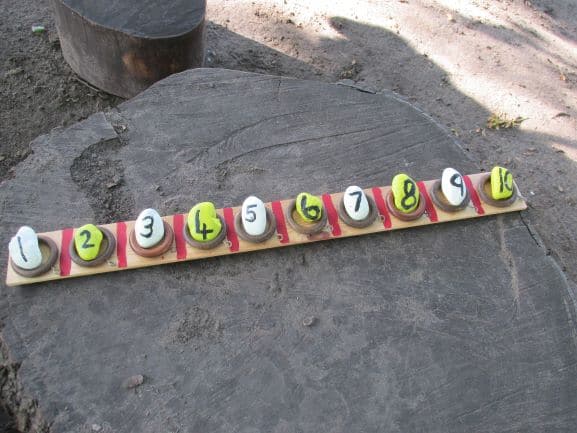
If you don’t want to create your own stones, you can also buy beautiful number stones, thus saving you time. Yellow Door painted number stones are a good choice (check out the latest price on Amazon here.)
Matching Numeral To Quantity Stones
Have some stones with numbers on, and some with quantities. It could be dots, or it could be something like insects.
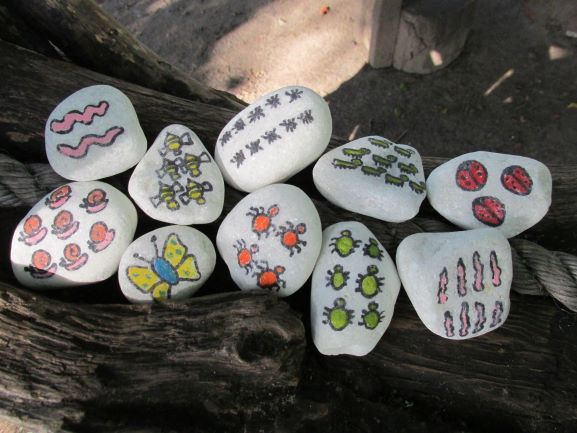
These are brilliant for one to one correspondence in particular. If you want to find out what one to one correspondence is, and the best ways to teach it, then check this out.
Animal Stones
I have some ladybird stones, some leopard ones, as well as some zebra and bee stones. Any animal that has a multi-colored pattern can be copied. These stones are great for games.
2s, 5s And 10s Stones
Great for higher-ability children in the early years, and for challenging younger kids who are starting to count in different ways.
These are perfect for ordering numbers in a range of ways.
Outdoor Models and Images
Mathematicians think in pictures.
Models and images seem to work really well outside because you can make them big, and they can be the focus of active games.
The benefits of using models and images include:
- They present maths as pictures
- They are visual
- They allow for problem-solving
- They allow for the manipulation of physical objects
- They can be used again and again, often in different ways
Chalkboard Paint
A lot of the resources that I have created are using black chalkboard paint . This is one of the ultimate resources in the early years. It is great for painting large surfaces for mark-making, such as fences, sheds, pallets, or old furniture.
I imagine any can of chalkboard paint would work, but I use American Crafts DIY Chalkboard Paint (check out the current price on Amazon) . It does the job great.
I have painted several pieces of MDF from a hardware shop and then used these for games. However, you could just as easily chalk the games on the floor. I also once painted tree stumps with lots of games using acrylic paint. They lasted for at least a year, even out in the rain.
Addition Triangles
These are great for exploring number bonds. They represent the part-part-whole model used in Singapore Maths.
I have painted my addition triangles onto a piece of MDF. Using the animal stones (or another resource such as leaves and sticks), you can explore number bonds.
For example, start with five stones in the top circle. Split them up into different quantities, and put the stones in the two lower circles. For example, it could be 1+4, or 2+3.
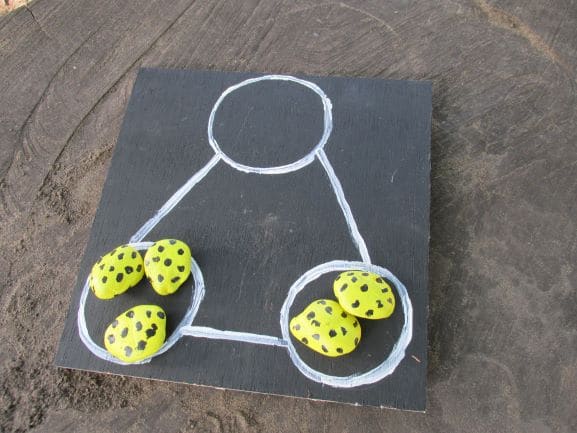
Higher-ability children could try to record what they have found.
2 Sets For Addition
This math game is another good one when children are beginning to add. You can use painted stones, or just found objects from the area.
Place some objects in either circle and then simply count how many you have got altogether. This is an excellent way of adding two sets and finding the total.
Trellis Models And Images
One of the best things I ever tried was sawing up a big trellis that I found at a garden center. I am pretty sure I saw this on Pinterest but cannot remember where. I cut it up into many different models, such as:
- A ten frame
- A five frame
- A two-part addition frame
- A four-part frame
There are so many games that you can play using these. Children really love finding objects to experiment with in the frames.
Ten frames are a key resource to introduce to young children both inside and out . To find out more about what ten frames are and the many ways to use them, take a look at this .
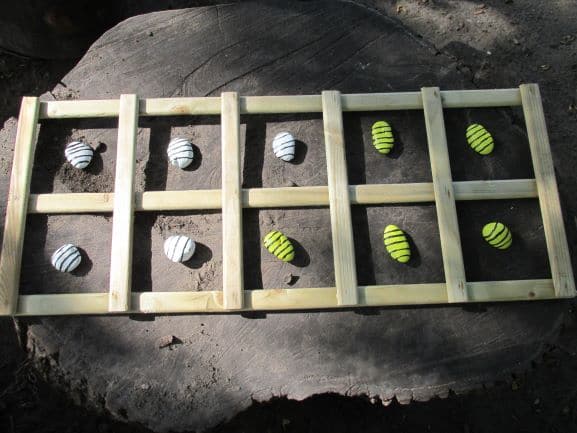
Board Games Outside
Board games are fantastic for a range of mathematical skills. They encourage:
- Counting for a purpose
- Recognizing numbers
- Problem-solving
- Find more/less
Some examples of fantastic outdoor board games include:
Noughts And Crosses
This seems to be known more by the modern generation as tic tac toe.
It is a brilliant game for problem-solving and simple counting, as well as turn-taking. You can easily create simple boards on wood or logs, and use painted stones or objects such as pine cones and conkers.

I have recently seen a board made out of rope.
It is good for simple counting, doing mental math and subitizing, as well as thinking ahead.
Connect Four
Another classic game from the old days.
If you play this game on the floor it is actually easier to get four in a row than if you play the standard plastic version.
Create a large grid board, and then use different objects for each player. It could be stones vs. conkers. Put one on at a time, and try to get four in a row. You can actually have more than 2 players if you want as well. Great for counting, subitizing numbers, tactics and problem solving.
Racetrack 1-6 Game
Have a dice with numerals on it and a board that is a simple grid, with numerals 1 to 6, and some other boxes. Pick which number you think will win, and put your colored stone at the top of the grid for that number. Then roll the dice multiple times. Every time you roll it, put a stone on the right numeral on the grid. The first number is the number that fills up its grid.
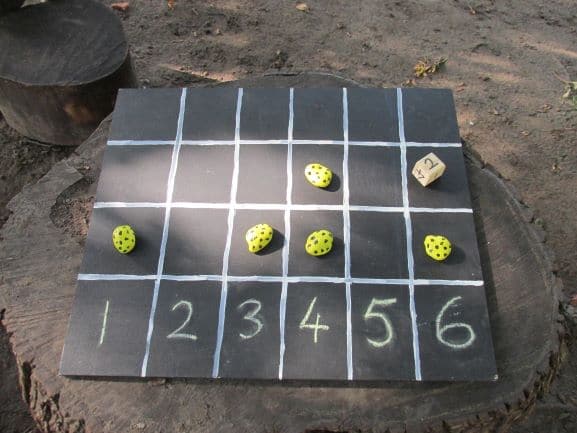
This is a fantastic activity for number recognition. If you want to find out my favorite 16 games to teach recognizing numerals, then take a look at this article.
Racetrack 1-12 Game
This is quite a bit harder, and has a lot of probability and calculating involved. But this game makes math problems and math equations more enjoyable to solve.
Have a racetrack that is a 12 x 4 grid. Have the numbers 1-12 written on the bottom of the grid.
You will need two dice, ideally a dots dice and a numeral dice.
To start with every player predicts which number they think will win. They use something such as a colored stone to signify this by putting the stone at the top of the grid in the number column.
Then you take turns to roll a dice. For example, you might get 3+4. Put a stone on the first box in the 7 column. Keep going, adding stones to the number columns. The ‘winner’ is the first number to come out 3 times and make it to the top of the grid.
This game is excellent for multiple things:
- Calculating
- Counting on
- Probability – Numbers 6 and 7 are the two most likely to win. They have the most combinations of numbers possible. Number 1 can never win as you can never throw a 1 with two dice. Children may start to get a bit of an idea of this when they play.
- Thinking about ‘more’. I.e. how many more a number needs to win.
Number Line Race
This is a great way of exploring a number line.
Have a long number line either chalked on the floor (or painted on a piece of wood). Each child has one ‘counter’ such as a colored stone.
The idea is that everyone starts at the beginning of the line. The first child rolls a 1-6 dice. They move their stone along the line to that point (e.g. 5). Then the other children go. For the next go, you simply keep moving along the number line. The winner is the person that gets to the end first.
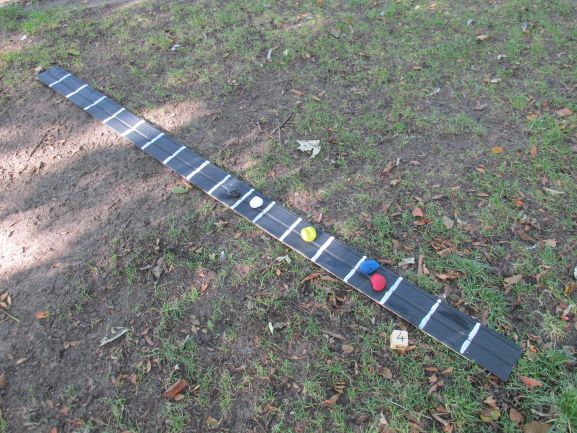
This is good for number recognition, and also problem solving (such as how far your opponent is ahead of you)
Blank Number Line Race
I also have a number line that has blank spaces on it. Children can add their own numbers to it.
They could be 1, 2, 3, etc., or they could mix it up. They could go backwards. Or they could start from a number that’s not 1. You could also do a game counting in tens.
Active Outdoor Math Games
Here are some physical outdoor games that can get children really engaged.
Stepping Stones
This is an excellent game of cooperation and teamwork.
I use rubber spots for this game with numbers on them. You can find similar spots to these at Amazon here.
You need one more spot than you have children, so if you have a team of six children you will need 7 spots (with numbers 1 to 7 on).

The children are in a line. The child at the front has all the spots (they have a hard job). The person at the back of the line actually has the hardest job, as they have to bend down and pick the spots up.
The idea is that the floor is now lava. You cannot stand on it. However, you can stand on the spots that are the stepping stones over the lava.
The child at the front finds number 1 and puts it on the floor. They stand on it. Then they put down number 2 in front of them, and step on that. Then number 3 etc. As there is a free stepping stone behind them, the others start to step onto the stones.
When number 7 is on the floor, the children should be standing on stones 2 to 7. Then it is the turn of the person at the back to pick up stone number 1 and pass it down the line.
They help each other to pass it down and the process starts again. The person at the back keeps on bending down and picking up the spare stepping stone.
I like to get them to say the number as they stand on it. This game is good for number recognition and ordering.
Using water spray-bottles
This is dead easy. Have water spray bottles and a dice. (A spray bottle lo oks a bit like this if you weren’t sure!)
Roll the dice and spray the bottle that number of times. It could be on the fence or on wallpaper. If you are brave you add a bit of paint to the water in the bottles.
Sticks Activities
There are so many learning opportunities can you perform with sticks including:
- Making 2D shapes.
- Ordering through size
- Making pictures – such as houses, vehicles, rockets, etc.
- Counting them
- Making ten-frames, or number lines
Balloon Games
Balloons are great for physical development, cooperation, and turn taking. Some great outdoor maths games with balloons include:
- Have a small group of children in a circle (approximately 4 to 6 children). Write numbers on a balloon in pen. Maybe put about 6 numbers on the balloon. One child hits the balloon up into the air, then another hits it up and continues. When you hit the balloon, say the number that you hit.
- Have lots of balloons, each with one number on them. Start with one balloon, keep it up, and when you hit it say the number. Then add another balloon to the circle, then another. Keep saying the number as you hit each balloon.
- Have one balloon again (this time with no numbers written on it). The first person says ‘One’ as they hit the balloon. Then the next person says, ‘two’. Continue like this.
- The harder version is counting back from 10 to 0. The first person hits the balloon and says ‘ten’. Then the next person says ‘nine’ as they hit it, and so on.

Maths Ball Games
All sorts of counting and number activities can really be brought to life with ball games . Here are some great examples:
Have Bibs With Numbers
This is one of the most fun outdoor math activities on this list!
Have shirts or bibs with numbers on that the children wear. The child-size version of these number sports vests would work well, as an example.
If you don’t have anything like this, you can write numbers on stickers and they stick them on their tops.
Stand in a circle.
The first child says a number that someone else is wearing and throws the ball to them. That person says ‘thank you’. Then that person chooses someone else, says their number and throws it to them.
This game can be done as a rolling game if they are struggling with catching.
Great for numeral recognition in a fun context.
Write Numbers On The Balls
Either put stickers with numbers on onto balls, or write directly onto them if you don’t mind having permanent number balls. We use large rubber balls that look a bit like this (check them out on Amazon).
Again this could be a rolling game or a throwing game, depending on the skills of the children.
Start with one ball, but you want to quickly extend it to at least two and hopefully more.
One child says someone’s name and throws a ball to them. That child catches it and says the number.
Then they say someone else’s name and throw it to them. Repeat.
If you have two or three balls going at once there is lots of communication and teamwork required.
Pass The Number Balls Around The Circle
Using the same balls that you created for the last game, play a simple numeral recognition game.
The children sit in a circle and pass the balls around. When they are holding a ball they say the number that is written on it, before passing the ball to the next person.
This game is good because even if you don’t recognize all the numbers, you can listen to the person next to you and copy what they have said. Hopefully, in this way, you are absorbing what the numbers are in some way.
For those who know the numbers already, it is great for speed and quick recognition practice.
Symmetry – Building Half A Giant Outside
This is a great provocation for using outdoors with natural loose parts – things like sticks, leaves, conkers, reels, and building blocks. Just whatever you can find in the outdoor space. To find out the many resources you can use for loose parts play, take a look at this list of at least 100 ideas .
There is a simple way to do it, and a trickier way.
The simple way is for the adult to draw the silhouette of a huge giant on the floor with chalk. Draw a central line down the center of the body, from the top of the head down to the feet.
Now children ‘build’ the giant. Whatever they place on one side – for example, 4 conkers for hair – they try to copy on the other side.
There are harder ways of trying this game out. One harder variation is just draw a central line on the floor with chalk and nothing else. Then, once again, they try to build the giant on one side, and copy it on the other. This will create a much more random creation, and really get them thinking
Washing Lines
There are so many things you can do with washing lines , and it really is so simple to set up. Pretty much all you need is a piece of string.
You can put the string:
- Between two fences
- Between two walls
- I know several teachers who have put wooden broomsticks into pots and then filled the pot with concrete so that the brooms stand up. These are great for creating a washing line between two brooms
If you put a washing line up outside, the big thing to be careful of is that children do not run into it by mistake. The big threat is things like neck injuries.
Some ways to combat this include:
- Having the string next to a wall or fence
- Have it above their head height, maybe with a platform for them to stand on to peg things on to it
- Have it in an area where running is not possible
Anyway, here are some fantastic outdoor washing line activities:
- Hanging up the giant’s clothes. The trick is to bring some large adult clothes in, and you will be amazed at how the children are convinced they are giant clothes. Hang them next to baby clothes, and talk about the differences in size
- Hanging up pairs of socks
- Finding objects outside, such as sticks and leaves and pegging them up. You can peg found objects up in patterns, or you can add or subtract from them. For example, you could have three red leaves and add two brown leaves. How many have you got altogether?
- Ordering numbers. Ideally use something natural, like pegs with numbers on them or wood slices with numbers on them.
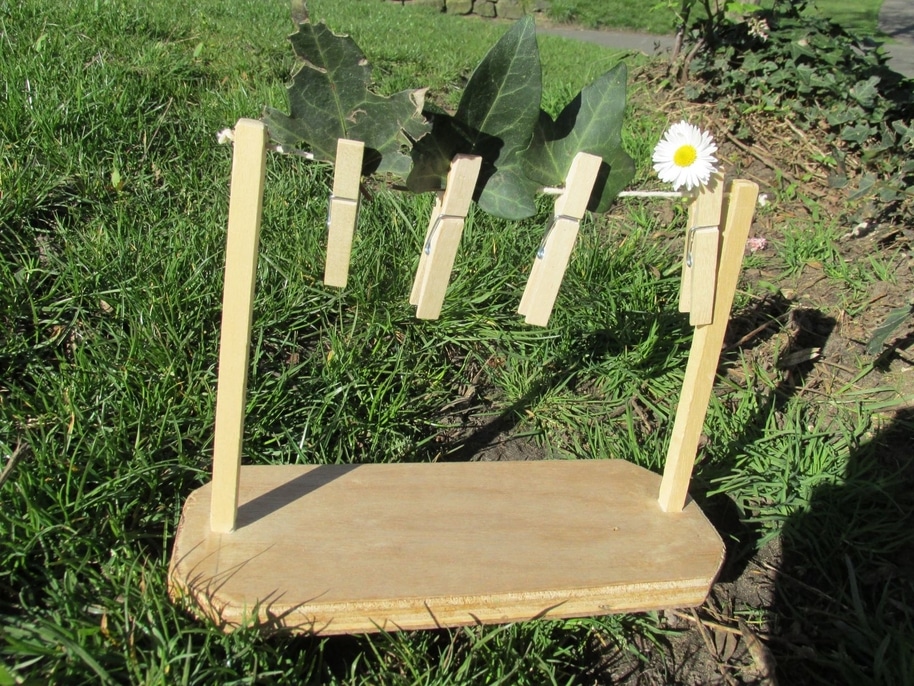
Parachute Games
Parachutes are another fantastic resource that can be used either adult-led outside or can be used independently if you model the games and how to use them to the children.
The parachute that I use looks like this:
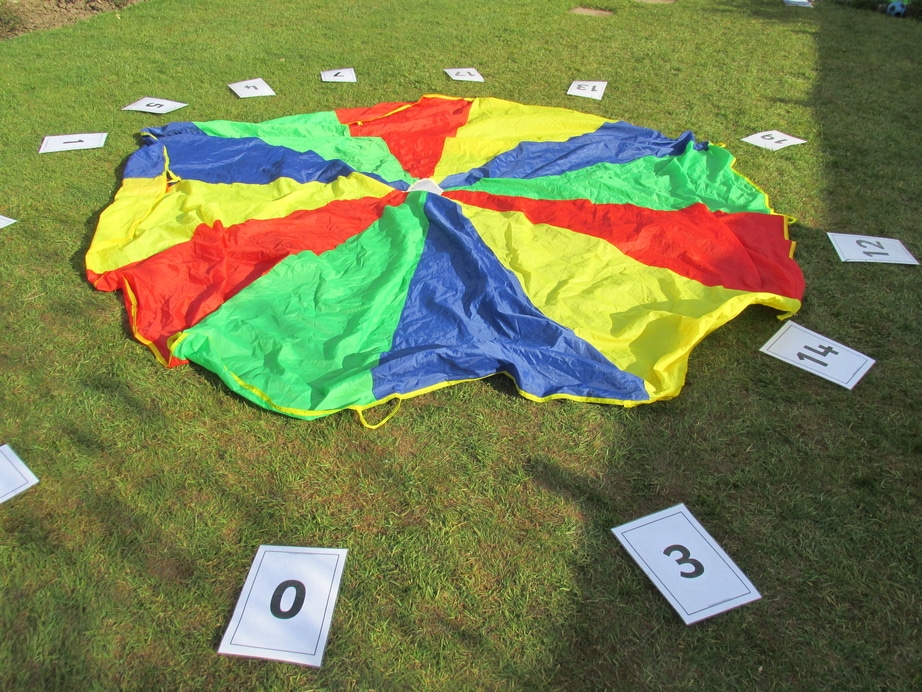
These are really resilient and can create years of fun and learning. (Check out the latest price of this parachute on Amazon).
Here are some excellent maths parachute games:
- Number dive. Have some numbers underneath the parachute. Have several children holding the parachute. Pick a child to go first, and say ‘1,2,3 – lift!’ Everyone lifts the parachute high into the air. Then shout a number. That child dives under the parachute, grabs the number, and brings it out to safety. Repeat for other children. If the children are doing it by themselves, then the child that has just gone picks the person to go next, and also what number they will get.
- Shape Dive! This is the same as number dive but with shapes.
- Singing counting songs . This works really well if you have some toys to go with it. For example, five monkey toys so you can sing 5 Cheeky Monkeys Jumping On The Bed. Great for singing the song, and taking off one monkey at a time. (Check out these gorgeous monkey finger puppets you could use for this activity here.)
- Bean bag bounce. This is an excellent number bonds game. Have ten bean-bags on the parachute. You have a few seconds where everyone tries to bounce the bean-bags off the parachute. Count back by going 5-4-3-2-1-0. When you get to zero, see now many bean bags are left on the parachute. You will always have a number bond. If there are two on the chute, then there will be three on the ground. If there are four on the chute, there will be six on the ground.
- Hit The Number! Have some rubber numbers (or something similar) and balance them on top of the parachute as everyone holds it together. Have a rubber ball for this game as well. The adult says a number, and everyone tries to roll the ball onto that number. This is a game of cooperation as well as number recognition. You can potentially make it harder by saying things like ‘one more than three’ (and trying to roll the ball onto number four).
Outdoor Games Top-Tips
- Make everything big!
- Make it active
- Use lots of models and images for games
- Use found objects like stones, sticks and leaves
- Use balls, and floor games, and things like balloons
Outdoor math games have loads of fantastic benefits.
It makes maths fun!
It consolidates prior learning in an active and concrete way.
It helps children to link maths learning to the real world.
It is also extremely cheap and quite simple to set up. Pretty much all of these outdoor math activities use resources that are easy to source, and cost next to nothing or are free.
So why not give outdoor math games a go today?
If you are reading this and are based in the UK, then you may well be interested in my Practical Early Years Maths Training Courses that I run around the UK. Check them out to find a venue near you. All sessions are hands-on, practical, and based on numerous ideas to help you find success in teaching maths.
Outdoor Loose Parts Ideas – The Essential Guide
21 Circle Time Games – That Actually Work!
- Our Story – Our Mission
- Our World Schooling Journey
- Paradigm Shift
- Conferences
- Play Spaces
- TRAINING PROGRAMS
How to introduce Patterns in Early Years Maths and why it is important
- On: June 17, 2019

Maths and Numeracy are a key component of Early Years Education. They equip children with fundamental skills that will assist them not only in their further education but also in their personal, civic and professional life.
What is Mathematical Education
Mathematical Education goes far beyond numerical operations and from the very early days of the Foundation Stage it helps children understand the world around. Thanks to developing mathematical skills such as reasoning and problem solving, children will be able to investigate and interpret situations around them, solve the problems that are meaningful to them, communicate their reasoning about the world, understand and predict changes, compare and contrast objects and phenomena. Mathematical Education will also help children relate to other disciplines such as Science, History and Geography in a meaningful way. They will be able to apply their knowledge and skills to understand historical timelines and consequences of events from local and world history, organise and interpret scientific data and make informed decisions about the solutions related to ecology and sustainability. Apart from that, starting mathematical education at an early stage of children’s education facilitates multi-cultural understanding as children will learn how modern society approaches numeracy, what tools and concepts it uses, and how these tools and concepts can be effectively adapted to further benefits. Mathematical education is also linked to design, money, health and technology, with the latter being the fastest developing area of education.

Mathematical Learning at Foundation Stage
At the F oundation Stage children are introduced to mathematical concepts in a way that best relates to their stage of development and their capacity. Children at this stage start to develop a sense of numbers, orders, sequences and patterns, and learn about the properties and characteristics of objects.Noticing details about the environment and the world around comes more naturally and at this stage children will be able to compare things, explain what certain objects have in common, and what makes them different. Early Mathematical Education supports further development of children’s ability to recognise and understand patterns and sequences. Children will learn about the attributes of things and collections, about movement and direction. They will gain awareness of mass, length and capacity, and will be able to order events and situations.

Why copying patterns is important?
Repeating patterns is a skill that we focus on during the Foundation Stage as it provides solid grounds for further development of mathematical skills. Organising objects into groups and patterns is one of children’s favourite activities. Working with patterns begins with drawing children’s attention to differences and similarities between things, objects and phenomena. Children will be able to copy a pattern once they are able to distinguish between objects. Copying patterns provides a basis for comparing things in terms of their mass, length, colour, size, shape and other characteristics. Repeating patterns means a child is able to copy exactly the same pattern again. This can be a line of colourful beads that we ask a child to form, a sequence of shapes or numbers to copy, write or draw, or a line of toy animal figures of different types and sizes. When a child works on copying a pattern, they focus on the object characteristics and pick the correct object out of the group of other similar objects. When the objects have the same colour, then it is the shapes or sizes that a child needs to focus on. When the objects belong to the same group, for example they are all animals, a child needs to be able to distinguish among them by carefully studying their details.

Patterns and mark making
To copy a pattern by drawing or writing it a child needs to observe all details of the letter, shape or object presented to them and then copy the pattern in an appropriate sequence. Apart from practicing their observational and reasoning skills, they also practice mark making which is an introduction to writing letters and numbers.
Patterns and predicting changes
As soon as children master copying patterns, they are ready to start predicting the sequence. This is why copying patterns provides grounds for the development of mathematical skills such as continuing patterns and forming sequences. Although it starts with predicting the objects that form a sequence, eventually the child will be able to predict the probability of things occurring around them. In the beginning, the practical applications of being able to recognise, copy and continue patterns will mainly relate to weather predictions, seasonal changes, natural phenomena such as sunsets and tides, and physiology such as digestion.

The way children naturally learn about patterns
One of the most important priorities for Maths Teachers is that children become creative and confident users of mathematical skills. For this to achieve, the teaching and learning processes need to be meaningful, enjoyable and engaging as children learn by doing and experiencing the world. Children enjoy creating their own collections of small objects, they arrange them the way they personally find most appealing, interesting and meaningful. Collecting objects, studying them, comparing and finally sorting them help children understand the world better. When children study their collections they pay special attention to details, and discover and investigate further how things are different and what they have in common. This in turn helps to bring about their first mathematical questions about the world.
How to introduce children to Repeating Patterns
It is recommended that teachers plan engaging and enjoyable experiences for children in order to help them become confident and creative users of mathematical skills. The more personalised the experiences and activities are, the more children will be able to relate their learning to their personal life.
An example of good practice is offering children opportunities to work with the patterns that occur around them naturally, and using everyday objects such as shells, fruit, pebbles or seeds. Making activities more multi-sensory will appeal to all children as full use of senses is the way they learn best. Working with the objects that are interesting to touch, are full of details and have textures that can be sensed and studied with fingers, are of vivid colours or patterns will make learning more attractive and meaningful.

Copying patterns is not only arranging objects in lines. It can also involve working with the rhythm, sound and music. Following rhythmic patterns and repeating them is too part of mathematical education related to a pattern recognition. Children can also be effectively introduced to patterns by means of creative arts & crafts activities. Decorating walls, pots, sandwiches and other every day objects with patterns of their choice will help children express themselves creatively, make learning more personalised and therefore facilitate their recognition of patterns.
Developing the awareness of patterns, recognising them and being able to copy them is an important part of Early Mathematical Education as these skills prepare children to understand more complex ideas and concepts related to algebraic, statistical and multiplicative thinking that will develop in subsequent years. By offering children motivating, meaningful and enjoyable experiences we will help them become creative, independent and motivated users of their mathematical skills.

This article was first published on The Educator, written by Natural Born Leaders.
More on the Topic

- Active Learning
- Cross-Curricular Learning
How to use Construction Play to support Holistic Cross-curricular Learning in the Early Years and Early Primary

- Teachers' CPD
5 Reasons to use Everyday Objects and Loose Parts to support Experiential Learning and Holistic Development
- Skip to primary navigation
- Skip to main content
- Skip to primary sidebar
Early Years Careers
How to promote problem solving in the early years
5th November 2015 by Kelly Leave a Comment
Ways to incorporate problem solving in the Early Years
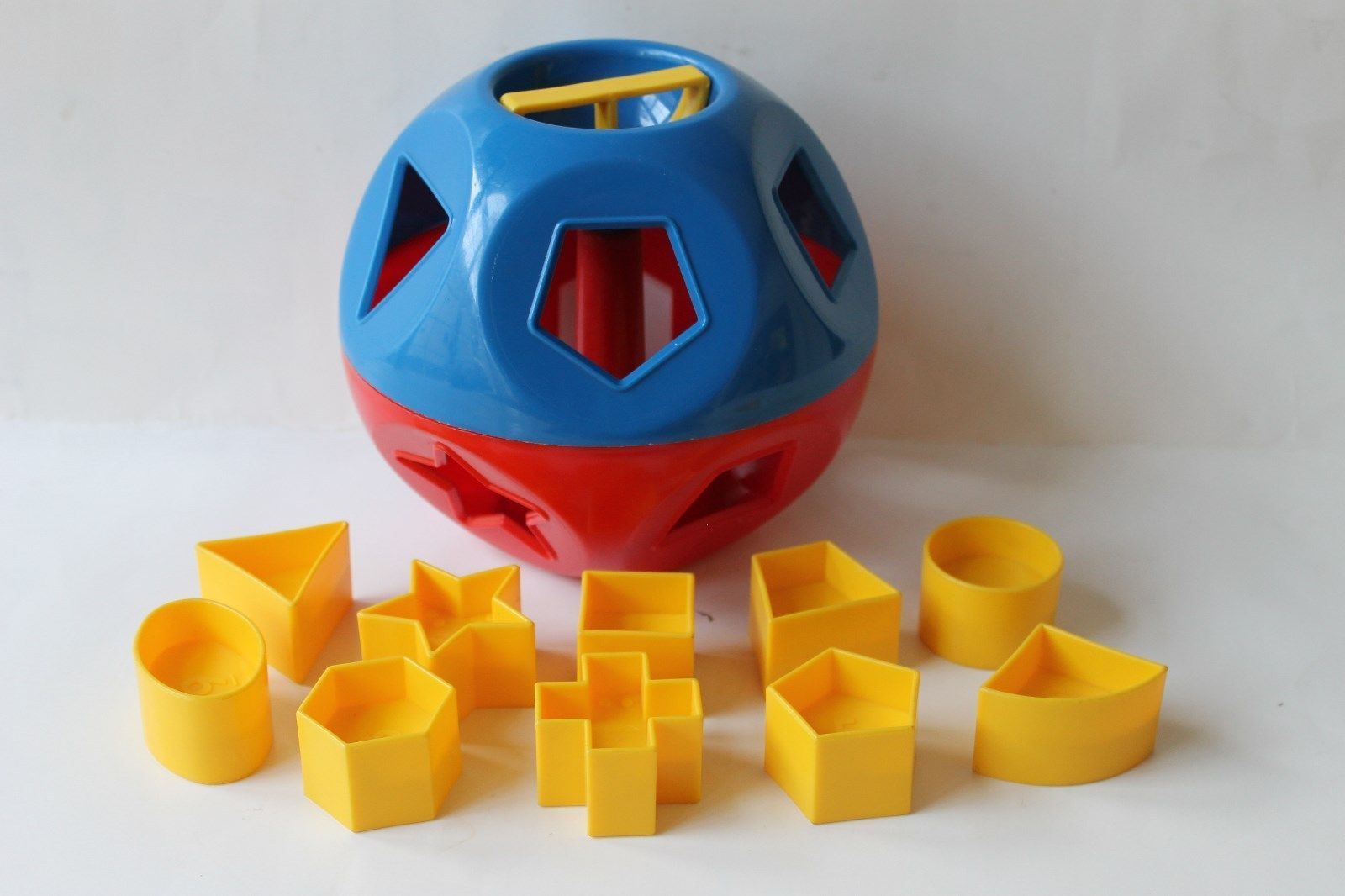
Developing problem solving skills is an area of development early years ’ practitioners are familiar with, and the importance of developing these problem solving skills is well known, but what exactly are problem solving skills? And how do we encourage children to develop these?
Within the Early Years Foundation Stage, problem solving comes under the category Mathematical Development, however this does not limit problem solving to just mathematical circumstances! There are opportunities for children in early years to explore problem solving every day, within all aspects of their development. Children are natural problem solvers from birth, all the way from learning to communicate problems through crying, through learning to talk and learning to walk. They develop a natural problem solving process through trial and error, for example, an infant will fall down many times before taking their first steps, but it’s the process of getting back up and trying again which helps them to achieve their goal.
Although problem solving can occur naturally, practitioners should still encourage children to recognise the process of problem solving and become familiar with it.
Shape sorters are a great activity for younger children to explore problem solving through trial and error. The children can get a feel of the shapes and see the holes, but will not yet have the knowledge of shapes to place the correct shape in the correct hole, they will attempt to fit shapes into holes, and when they realise it will not fit, they move onto the next hole. As the children get older, they can apply their knowledge and learning to this activity, understanding that the square shape will fit with the square hole, thus overcoming a problem. Jigsaws are another effective way of children developing problem solving skills in the early years. With younger children larger puzzle pieces can be used made out of tactile materials and they can attempt to solve the jigsaw through trial and error again. Slightly older children can expand onto smaller puzzle pieces, once they have mastered more simple jigsaws. Practitioners should take note of the different strategies children use in order to fit different puzzle pieces together and offer directional help such as matching the colours of pieces together should a child become frustrated.
Early Years practitioners can help children apply problem solving skills to real life situations as well as various activities. For example, practitioners can encourage children to help set up at meal times, but pose them with a problem of not having enough cutlery for each child. Children could be able to recognise this problem, or be guided by the practitioners to realise that not enough cutlery could pose a problem. Practitioners can then encourage and support the children to think of a solution to this problem. Allow children to use their imagination to solve problems, the sky is the limit! If they suggest sharing cutlery or even crafting their own cutlery out of different items, then this is all part of the problem solving process! They are recognising a problem and attempting a solution.
Overall, there are many activities and real life scenarios practitioners can implement in order to help children explore problem solving skills and guide them to create a solution. Using numbers and mathematics are not the only methods of developing problem solving skills as seen from above, but they can be an effective way to develop learning numeracy skills which can help in later life.
Related Posts:
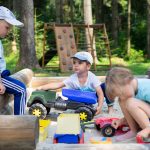
Reader Interactions
Leave a reply cancel reply.
Your email address will not be published. Required fields are marked *
Exploring Problem-Solving in Early Years Mathematics | EYFS/KS1

This webinar will provide headteachers, mathematics leads, teachers and teaching assistants with practical guidance and methods they can use to nurture and develop pupils’ problem-solving skills in early years and KS1 mathematics.
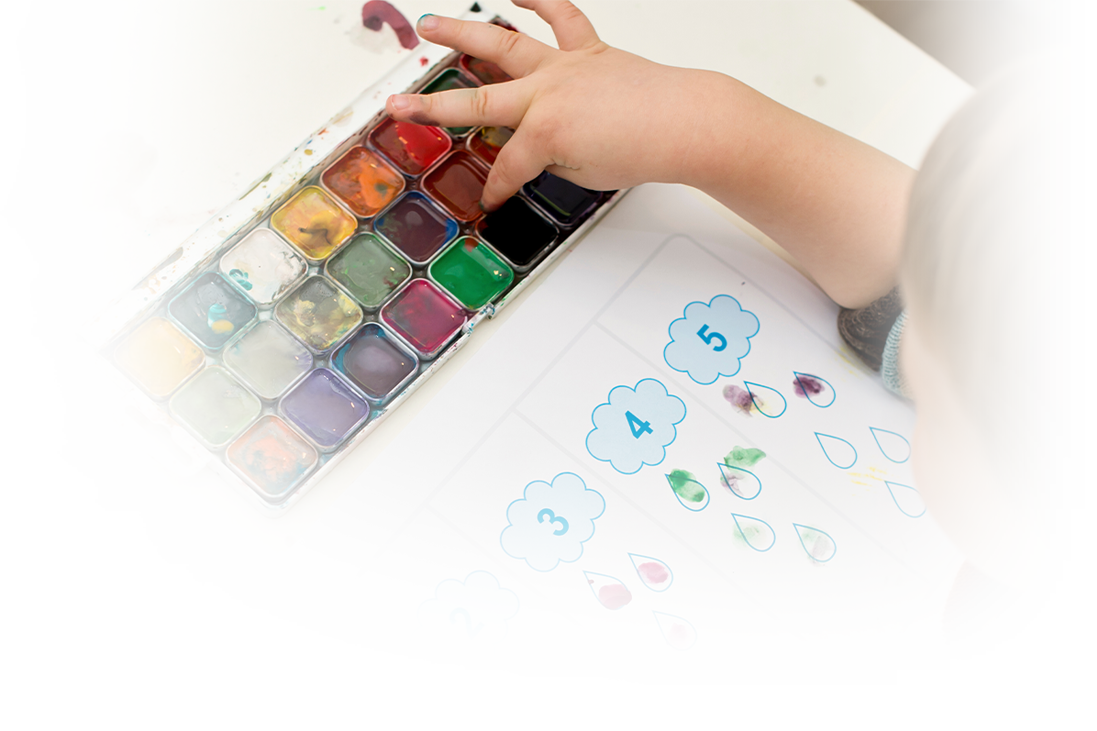
- Description
- Learning Outcomes
- Institution
Webinar Duration: 46 minutes (approx.)
This webinar will provide headteachers, mathematics leads, teachers and teaching assistants with practical guidance and methods they can use to nurture and develop pupils’ problem-solving skills in maths.
Problem-solving has long been at the heart of the mathematics curriculum. Teaching children how to problem solve in mathematics can support children’s ability to critically evaluate, encourage independence and develop their skills in reasoning and creativity. It is also an essential part of developing mastery of the subject.
In this webinar the Association of Teachers of Mathematics (ATM), who aim to support the teaching and learning of mathematics in the UK, will explore strategies that schools can use to approach problem-solving in maths with the youngest pupils which are creative and engaging and reflect a better understanding of the needs of the learner.
- Understanding how to introduce learning and problem solving in mathematics which supports children’s ability to problem solve and improve critical thinking skills.
- Recognising successful techniques that can be used in the classroom which improve reasoning in mathematics.
- Appreciating the importance of making maths problem-solving learning tailored towards the needs of children and ensuring continuous sharing and evaluation of different methods used.
- Understanding what is meant by ‘problem-solving skills’ and how to nurture an environment which encourages curiosity and positive attitudes.
- Building a culture which supports teaching and learning through playing and exploring, active learning and creative and critical thinking.
Since 1994, Helen has been an independent educational consultant specialising in developing the teaching and learning of primary mathematics. In July 2014, she completed her doctorate with the University of Roehampton, London. She is interested in engaging all learners mathematically, and how we might nurture effective and supportive learning communities in classrooms in a current educational climate geared to high-stakes testing. Helen is passionate about all children being given opportunities to become confident mathematical thinkers, through the establishment of a classroom culture that nurtures curious learners.
Helen has taught children across the full primary range and has a particular interest and expertise in early years and KS1 mathematics. Her work involves researching and teaching mathematics alongside colleagues in school and contributing to in-service training courses and conferences. Helen is a long-term, active member of the Association of Teachers of Mathematics (ATM).

- Share full article
For more audio journalism and storytelling, download New York Times Audio , a new iOS app available for news subscribers.

- Apple Podcasts
- Google Podcasts
The Republican Plan to Challenge a Harris Victory
How a right-wing takeover of an obscure, unelected board in georgia could swing the election..

Hosted by Michael Barbaro
Featuring Nick Corasaniti
Produced by Olivia Natt Asthaa Chaturvedi and Eric Krupke
Edited by Patricia Willens
With Lexie Diao and Michael Benoist
Original music by Dan Powell Corey Schreppel Rowan Niemisto and Diane Wong
Engineered by Chris Wood
Listen and follow ‘The Daily’ Apple Podcasts | Spotify | Amazon Music | YouTube | iHeartRadio
At the Democratic National Convention, party officials are celebrating polls showing that Kamala Harris is now competitive with Donald Trump in every major swing state across the country.
But in one of those swing states, Republicans have laid the groundwork to challenge a potential Harris victory this fall, by taking over an obscure, unelected board.
Nick Corasaniti, a Times reporter who focuses on voting and elections, explains.
On today’s episode

Nick Corasaniti , a reporter covering national politics for The New York Times.

Background reading
The unelected body that shapes voting rules in Georgia has a new conservative majority, whose members question the state’s 2020 results. They now have new power to influence the results in 2024 .
Kamala Harris and Donald Trump are in close races across Arizona, Georgia, Nevada and North Carolina , crucial swing states that Mr. Trump had seemed poised to run away with.
There are a lot of ways to listen to The Daily. Here’s how.
We aim to make transcripts available the next workday after an episode’s publication. You can find them at the top of the page.
Fact-checking by Susan Lee .
The Daily is made by Rachel Quester, Lynsea Garrison, Clare Toeniskoetter, Paige Cowett, Michael Simon Johnson, Brad Fisher, Chris Wood, Jessica Cheung, Stella Tan, Alexandra Leigh Young, Lisa Chow, Eric Krupke, Marc Georges, Luke Vander Ploeg, M.J. Davis Lin, Dan Powell, Sydney Harper, Michael Benoist, Liz O. Baylen, Asthaa Chaturvedi, Rachelle Bonja, Diana Nguyen, Marion Lozano, Corey Schreppel, Rob Szypko, Elisheba Ittoop, Mooj Zadie, Patricia Willens, Rowan Niemisto, Jody Becker, Rikki Novetsky, Nina Feldman, Will Reid, Carlos Prieto, Ben Calhoun, Susan Lee, Lexie Diao, Mary Wilson, Alex Stern, Sophia Lanman, Shannon Lin, Diane Wong, Devon Taylor, Alyssa Moxley, Olivia Natt, Daniel Ramirez and Brendan Klinkenberg.
Our theme music is by Jim Brunberg and Ben Landsverk of Wonderly. Special thanks to Sam Dolnick, Paula Szuchman, Lisa Tobin, Larissa Anderson, Julia Simon, Sofia Milan, Mahima Chablani, Elizabeth Davis-Moorer, Jeffrey Miranda, Maddy Masiello, Isabella Anderson, Nina Lassam and Nick Pitman.
Nick Corasaniti is a Times reporter covering national politics, with a focus on voting and elections. More about Nick Corasaniti
Advertisement

Or search by topic
Number and algebra.
- Place value and the number system
- Fractions, decimals, percentages, ratio and proportion
- Calculations and numerical methods
- Algebraic expressions, equations and formulae
- Coordinates, functions and graphs
- Patterns, sequences and structure
- Properties of numbers
Geometry and measure
- 3D geometry, shape and space
- Transformations and constructions
- Vectors and matrices
- Measuring and calculating with units
- Pythagoras and trigonometry
- Angles, polygons, and geometrical proof
Probability and statistics
- Handling, processing and representing data
- Probability (spec_group)
Working mathematically
- Thinking mathematically
- Mathematical mindsets
Advanced mathematics
- Decision mathematics and combinatorics
- Advanced probability and statistics
For younger learners
- Early years foundation stage
Problem Solving
Problem solving and the new curriculum
Developing a classroom culture that supports a problem-solving approach to mathematics
Developing excellence in problem solving with young learners
Using NRICH Tasks to Develop Key Problem-solving Skills
Trial and Improvement at KS1
Trial and Improvement at KS2
Working Systematically - Primary teachers
Number Patterns
Working Backwards at KS1
Working Backwards at KS2
Visualising at KS1 - Primary teachers
Visualising at KS2 - Primary teachers
Conjecturing and Generalising at KS1 - Primary teachers
Conjecturing and Generalising at KS2 - Primary teachers
Mathematical Problem Solving in the Early Years
Low threshold high ceiling - an introduction.
What's all the talking about?
Group-worthy tasks and their potential to support children to develop independent problem-solving skills
Developing the classroom culture: using the Dotty Six Activity as a springboard for investigation

COMMENTS
Supporting maths problem-solving. You can effectively support children's developing maths problem-solving strategies through: Modelling maths talk and discussion - language is part of maths learning because talking problems through is vital. Children need to hear specific mathematical vocabulary in context.
Maths mastery for Early Years. Given the importance of developing sound mathematical understanding in the early years, the maths mastery approach can be especially useful, considering its focus on problem solving and whole-class learning.
Problem Solvers is a free, downloadable early math curriculum for children aged 30 to 48 months that includes: 22 play-based preschool and early math activities, spanning 7 domains of early math. 22 specially-composed songs that support early math learning in each activity. 22 book suggestions and extension activities that nurture early math ...
Through our choice of task. gh structuring the stages of the problem-solving processThrough explicitly and repeatedly providing children. ith opportunities to develop key problem-solving skills.In an Early Years (EY) setting, I would suggest tha. Choice of 'task': think resources and skilful questioningI have deliberately used inverted commas ...
Early Years Practitioners. Our Early Years resources will support you as you develop the initial building blocks for young children's mathematical thinking, reasoning and problem solving. Browse this section to find activities for children, the latest articles for Early Years practitioners, and examples of children's thinking.
However, problem-solving is much more than number conundrums. Problem-solving is a key part of early years development and can support learning across many of the My First Five Years streams. The skill of problem-solving starts developing very early in a child's life and stems from the knowledge of the world that they are constantly building.[1].
Through using our resources, Early Years children can enhance their learning while having a good time! More Maths Problem-Solving Ideas for EYFS. If your Early Years children particularly enjoy one or more of these maths problem-solving activities, then you can make the most of that engagement by adding extension activities.
The first article Mathematical Problem Solving in the Early Years pointed out that young children are natural problem setters and solvers: that is how they learn. This article suggests ways to develop children's problem solving strategies and confidence. Problem solving is an important way of learning, because it motivates children to connect previous knowledge with new situations and to ...
The teacher counts aloud as Ben lifts each finger, stopping at five. "I need five cakes then," Ben says. "Yes," the teacher agrees, "you need one more cake, and then there is one for each teddy". 3. Reminding. Educators can prompt children to remember and apply a previous strategy to solve a mathematical problem.
The independent review of mathematics teaching in Early Years settings and primary schools, known as the Williams review (DCSF, 2008a), recommended that the DCSF should commission a set of materials on ... Opportunities for problem solving, reasoning, critical thinking and reflection are vital if children are to
Paper Cards. Coloured Pencils. LEGO Blocks. . 3. Challenge the children's maths skills to solve a missing number mystery. Missing Number Math Activity by Planning Playtime. This Early Years maths game: Write number sequences on craft sticks and remember to leave some blanks in between.
early experiences have long-lasting outcomes [14, 18]. Although our knowledge is still far from com-plete, we now have a fuller picture of the math-ematics young children are able to ac. uire and the practices to promote their understanding. This knowledge, however, is not yet in the hands of most early childhood t.
The EEF's Maths Specialist, Kirstin Mulholland, explains how to use ' Think Alouds' to scaffold pupils' problem solving in mathematics. In the wake of the upheaval of the last two years, many children are finding mathematical problem-solving challenging. With the prospect of missed curriculum time, the prospect can seem daunting.
An Early Years maths activity from NRICH about trying to solve problems step-by-step by recording all the data you know. This activity uses a story called Pirate Panda and asks the children to decide what the main character should do with all the gold coins he has found, should he keep them or share them out with his friends? This plan ...
EYFS Maths Activities - Summer Term Activity Mats. 4.6 (19 reviews) Fairy Tale-Themed Copy the Building Brick Model Challenge Cards. 5.0 (12 reviews) Maths Area Continuous Provision Challenge Cards. 4.3 (15 reviews) 2D Shapes Pegboard Challenge Cards. 4.9 (18 reviews) EYFS Maths Problem-Solving Cards.
Maths: Solving Problems - Halving Home Learning Challenges. 5.0 (6 Reviews) Natural Estimating Jars Outdoor Activity. 5.0 (1 Review) 3 Piece Triangle Puzzle. Have a look at these wonderful Early Years problem-solving activities to improve your child's numeracy skills. They're teacher-made to align to the EYLF and for use at preschool or ...
Reception Maths: Open-ended Investigations. Mathematical Problem-solving. Problem-solving tasks develop mathematical skills and problem-solving tactics. These open-ended investigations for Reception or Early Years settings are designed to take advantage of outdoor learning environments, but many of them can be adapted to run inside. Nick's ...
Balloon Games. Balloons are great for physical development, cooperation, and turn taking. Some great outdoor maths games with balloons include: Have a small group of children in a circle (approximately 4 to 6 children). Write numbers on a balloon in pen. Maybe put about 6 numbers on the balloon.
The NRICH Early Years resources aim to further develop children's natural problem-solving abilities in the context of mathematics. Through explicitly and repeatedly providing children with opportunities to develop key problem-solving skills. In an Early Years (EY) setting, I would suggest that the first and third of these are particularly ...
Maths and Numeracy are a key component of Early Years Education. They equip children with fundamental skills that will assist them not only in their further education but also in their personal, civic and professional life. What is Mathematical Education Mathematical Education goes far beyond numerical operations and from the very early days of the Foundation Stage it helps children understand the
Within the Early Years Foundation Stage, problem solving comes under the category Mathematical Development, however this does not limit problem solving to just mathematical circumstances! There are opportunities for children in early years to explore problem solving every day, within all aspects of their development.
In this article for Early Years practitioners, Dr Sue Gifford outlines ways to develop children's problem-solving strategies and confidence in problem solving. What to Expect, When? Parents' Guide 2015. This short article critiques the 'What to Expect, When' guidance, written for parents who want to find out more about their child's learning ...
This webinar will provide headteachers, mathematics leads, teachers and teaching assistants with practical guidance and methods they can use to nurture and develop pupils' problem-solving skills in early years and KS1 mathematics. Webinar Duration: 46 minutes (approx.)
The Sunday Read: 'The Man Who Couldn't Stop Going to College'
Developing a classroom culture that supports a problem-solving approach to mathematics. This article offers you practical ways to investigate aspects of your classroom culture. ... This article describes how the NRICH Early Years resources aim to further develop young children's natural problem-solving abilities in the context of mathematics ...